

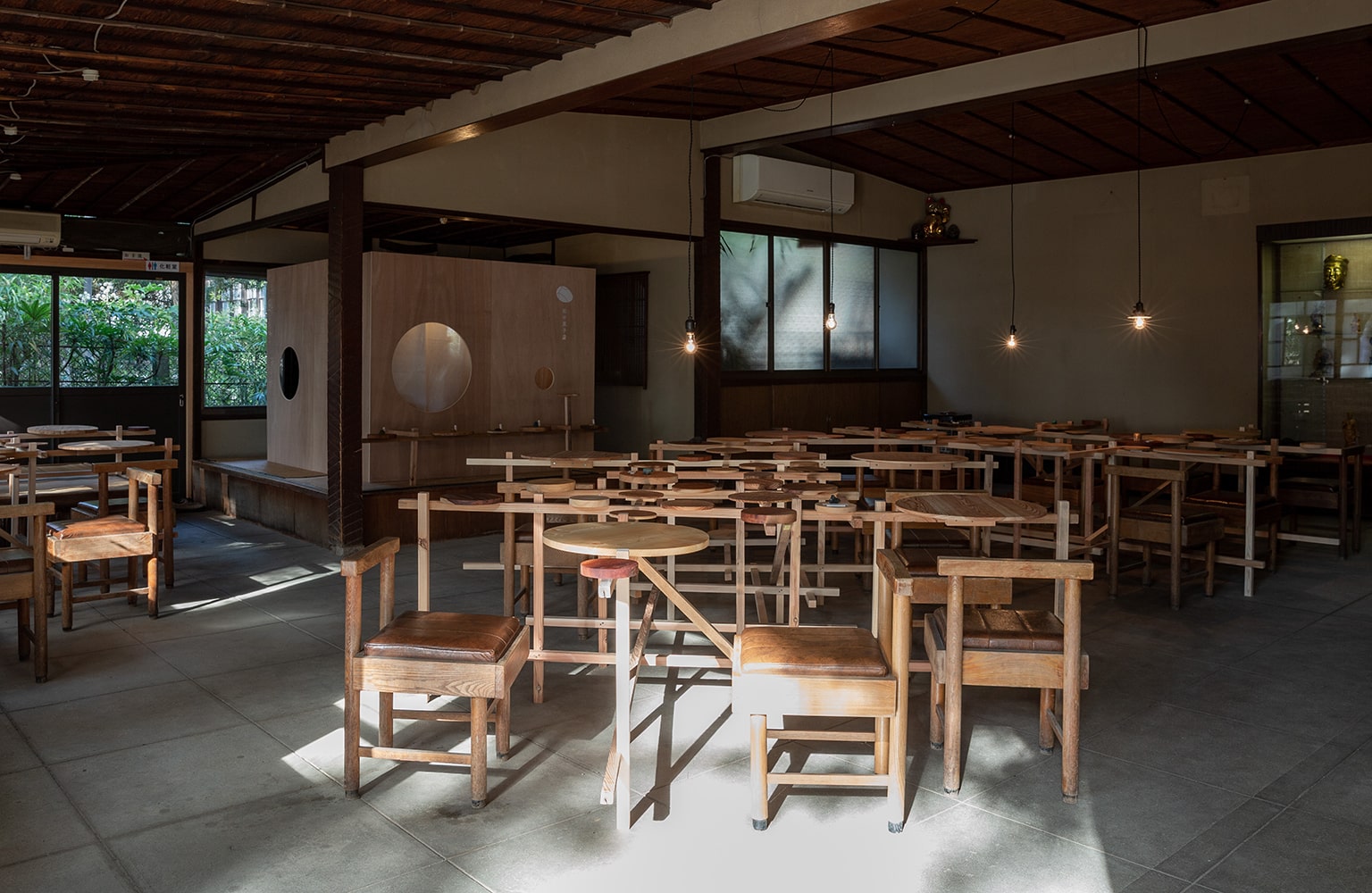
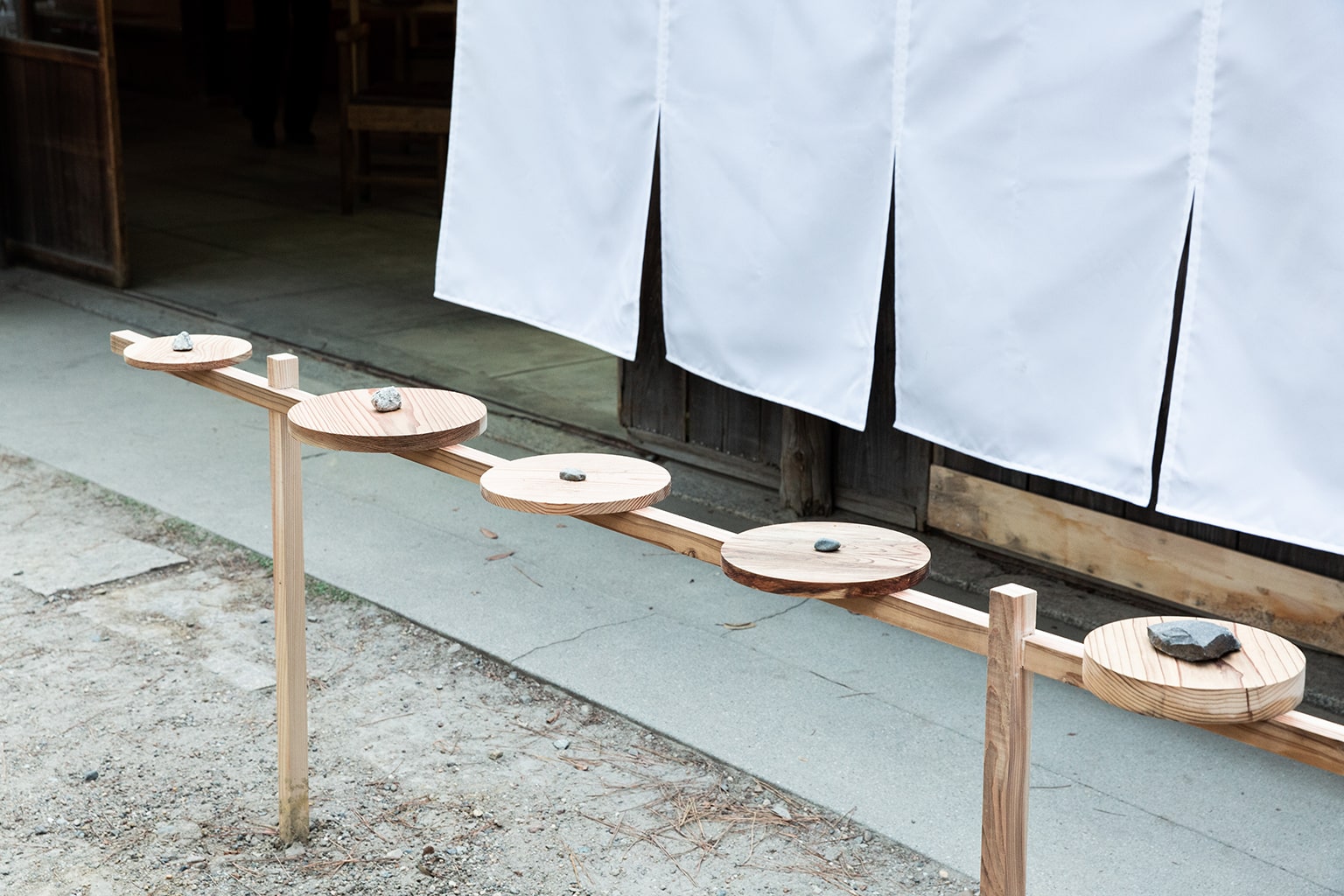
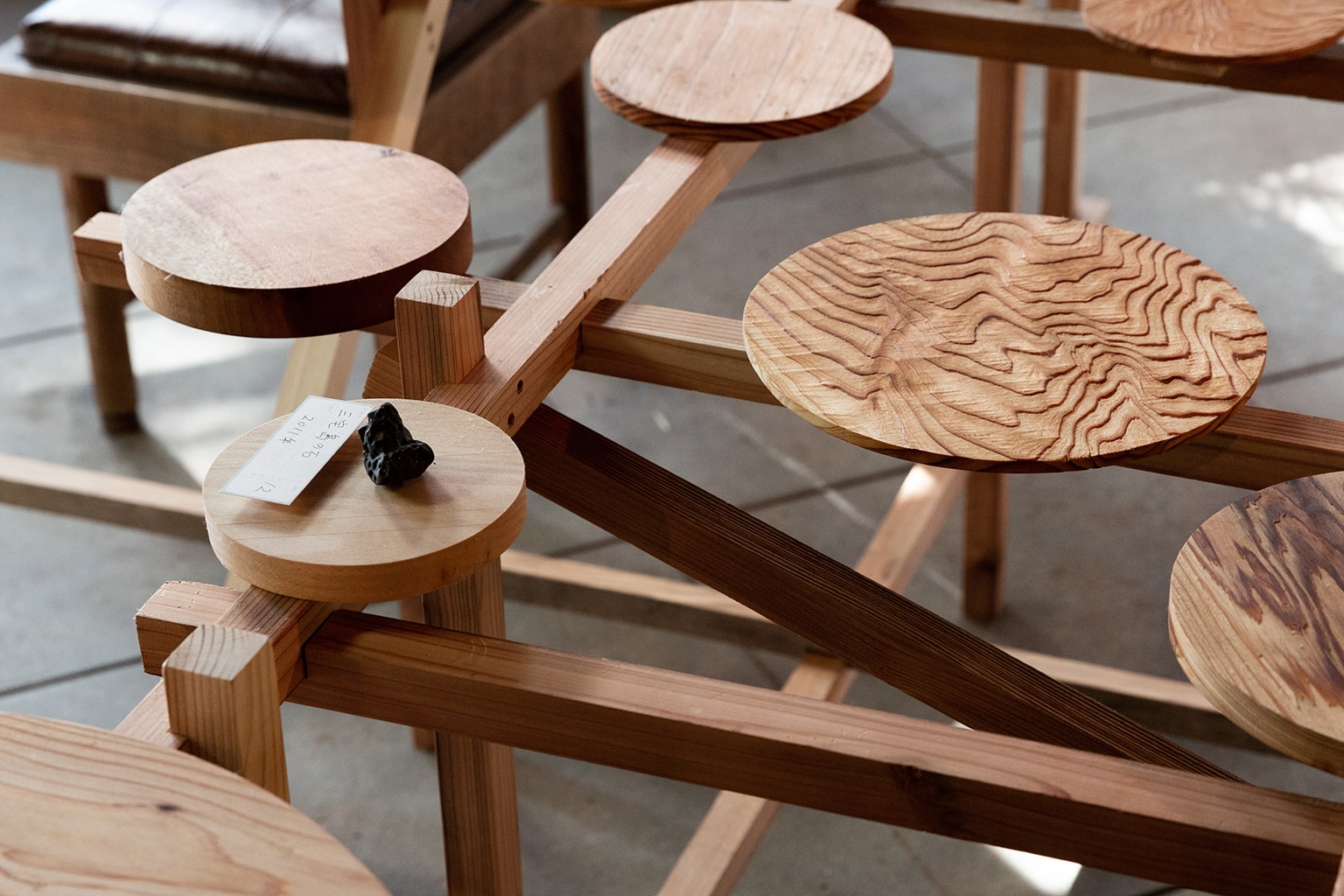
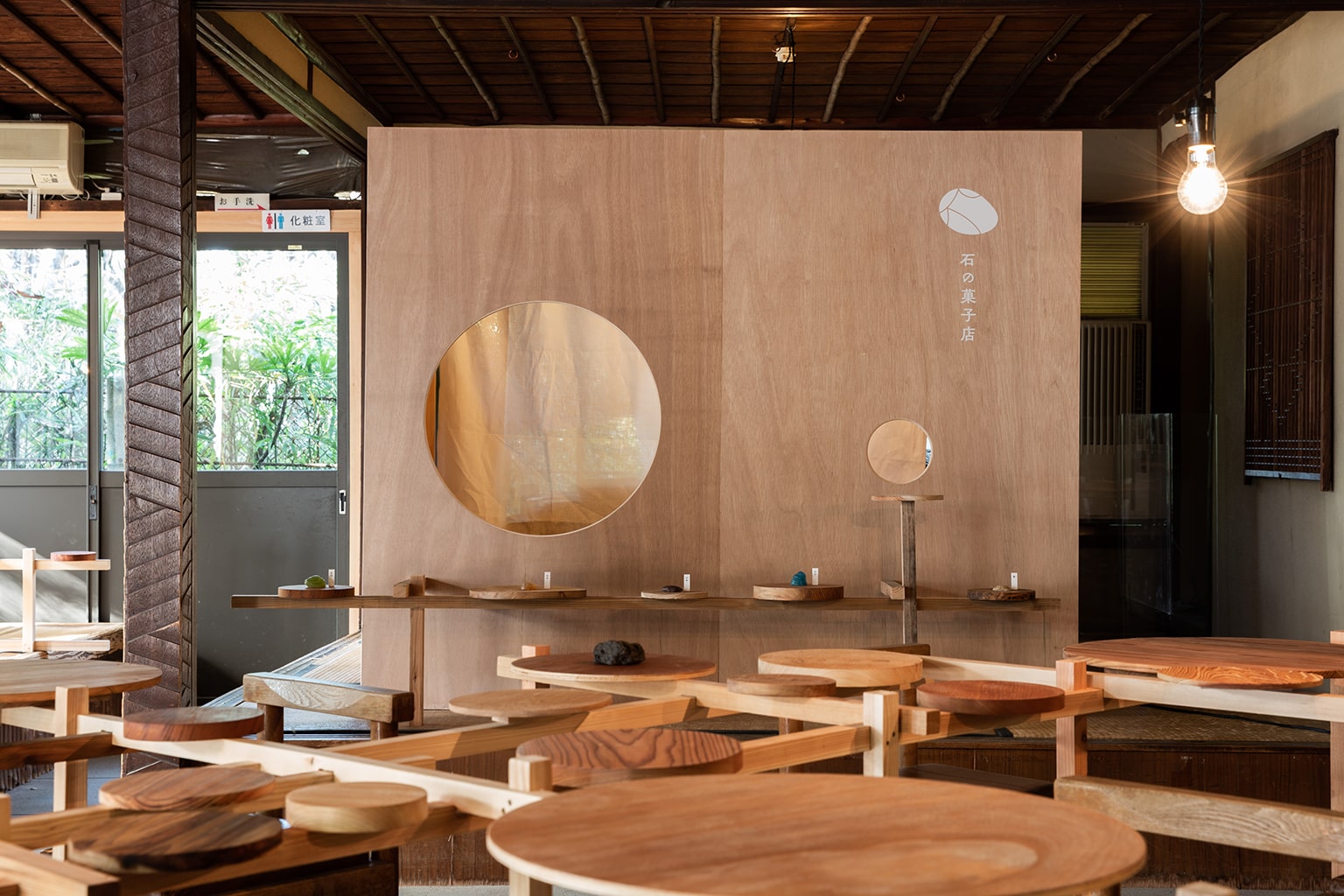
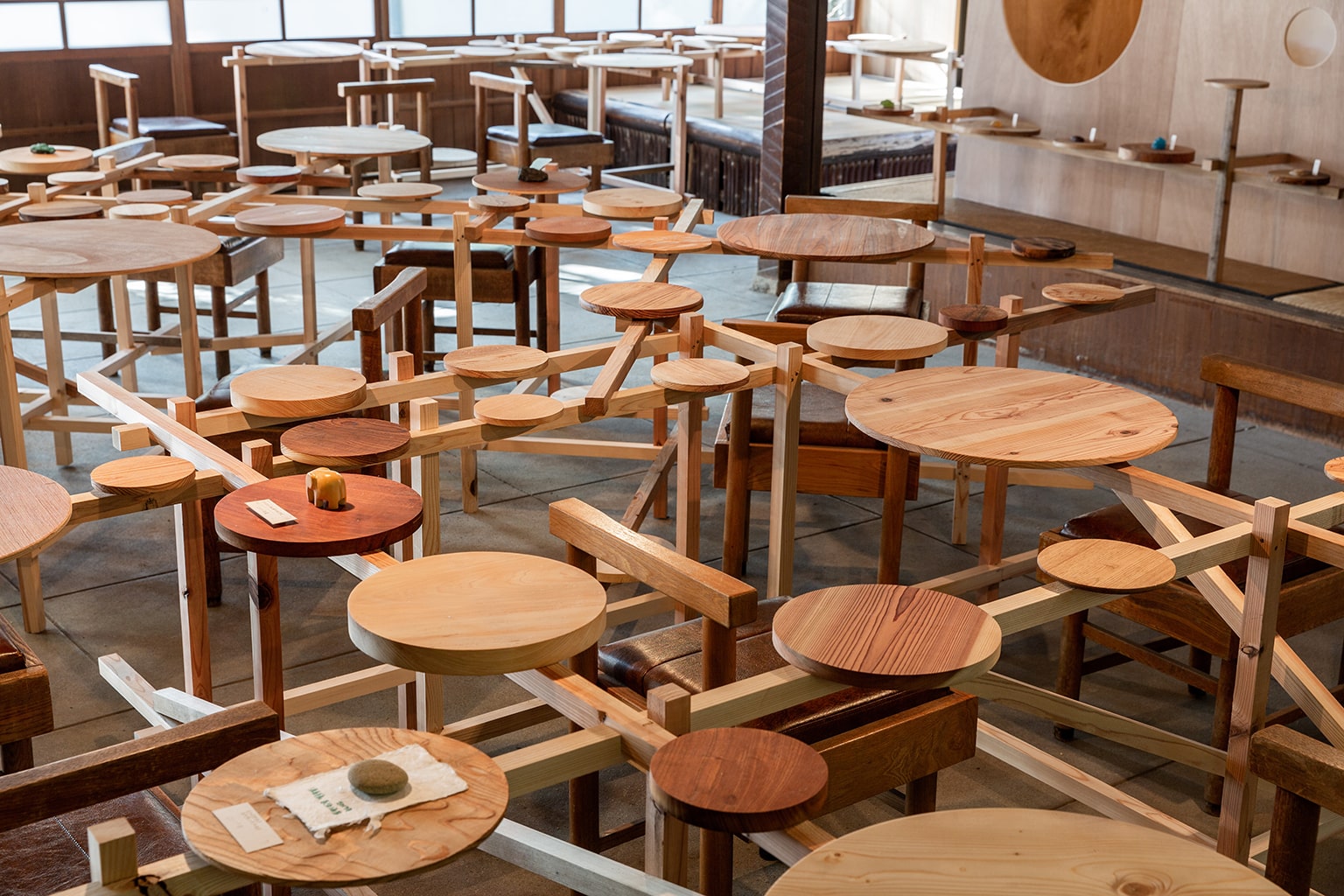
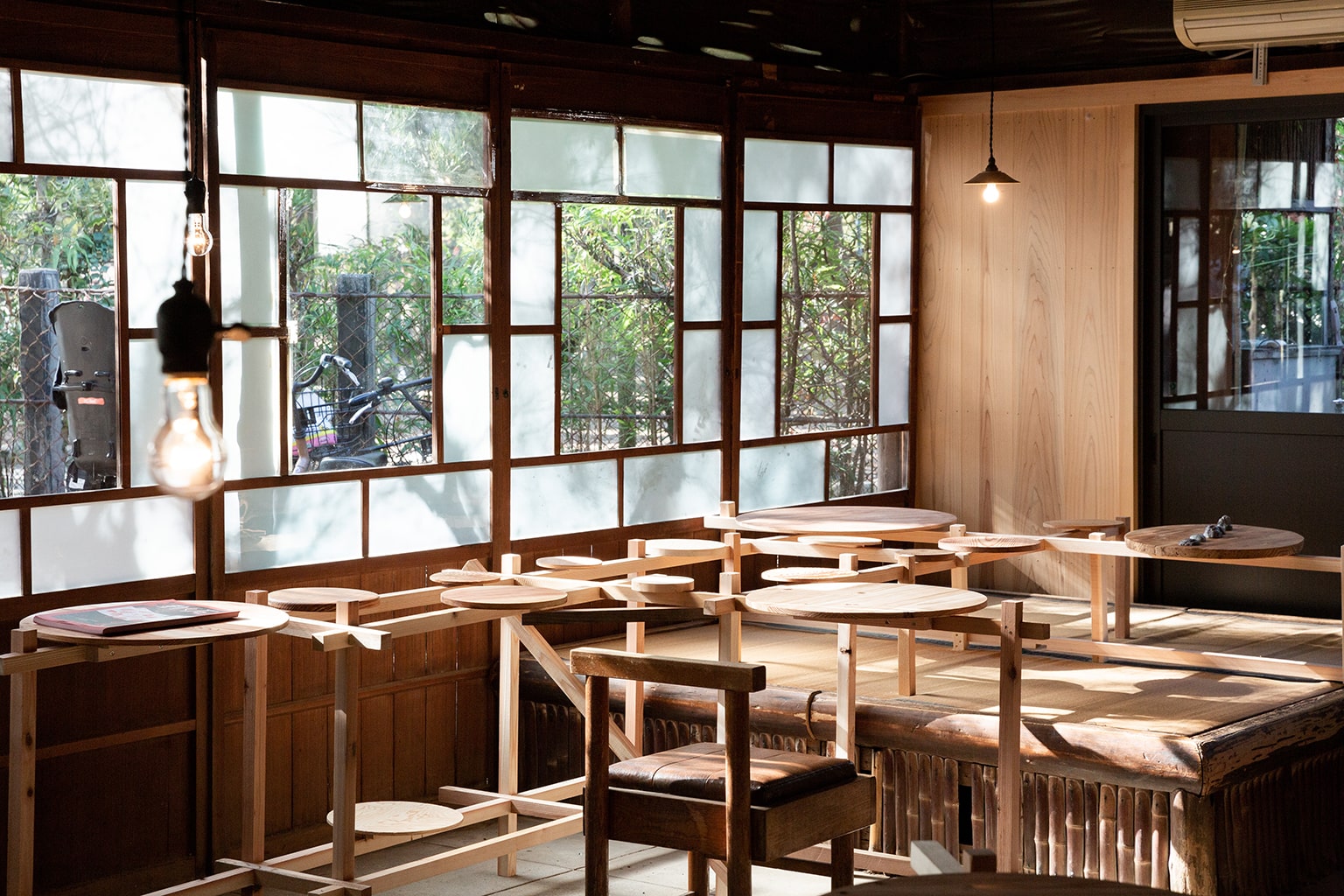
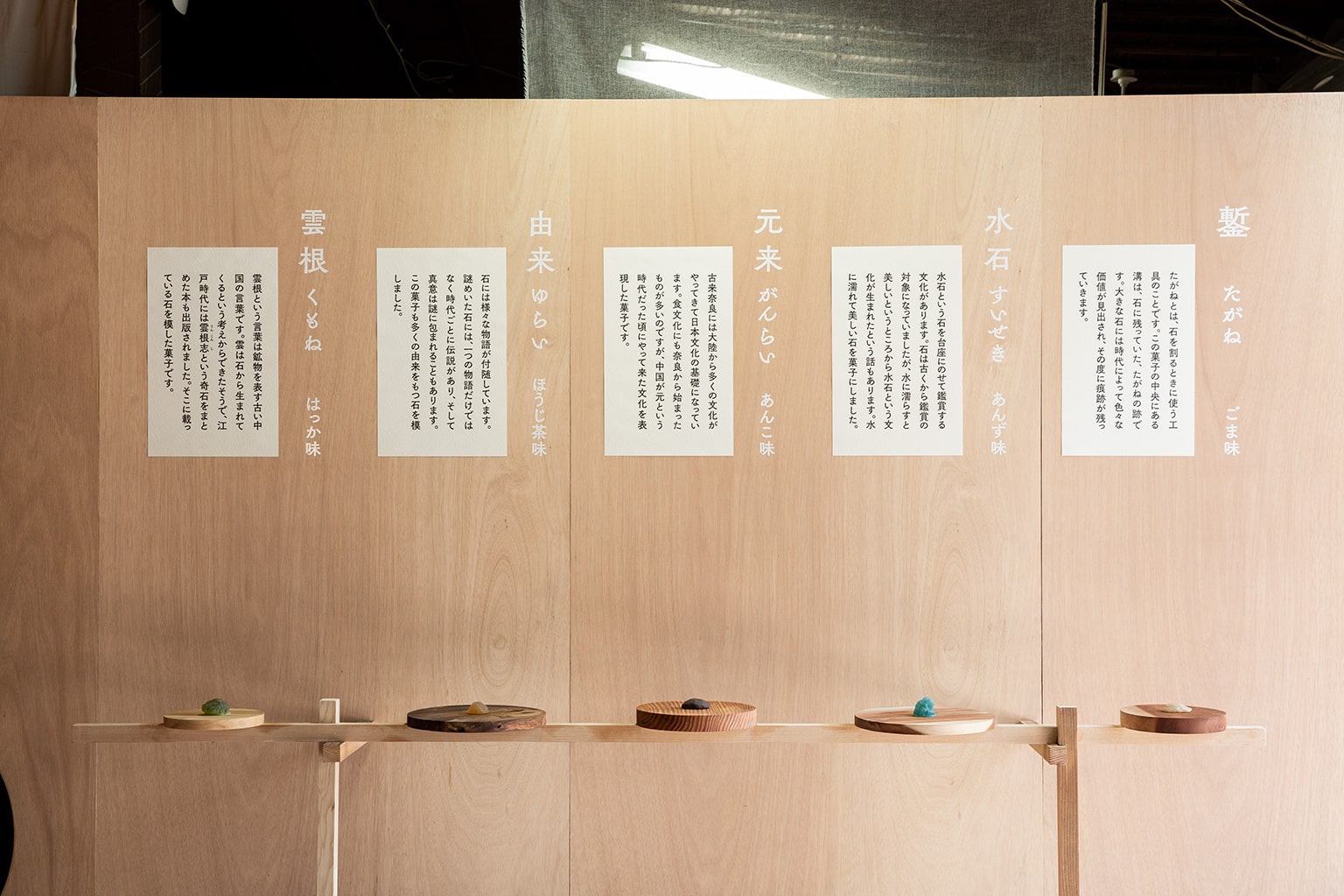
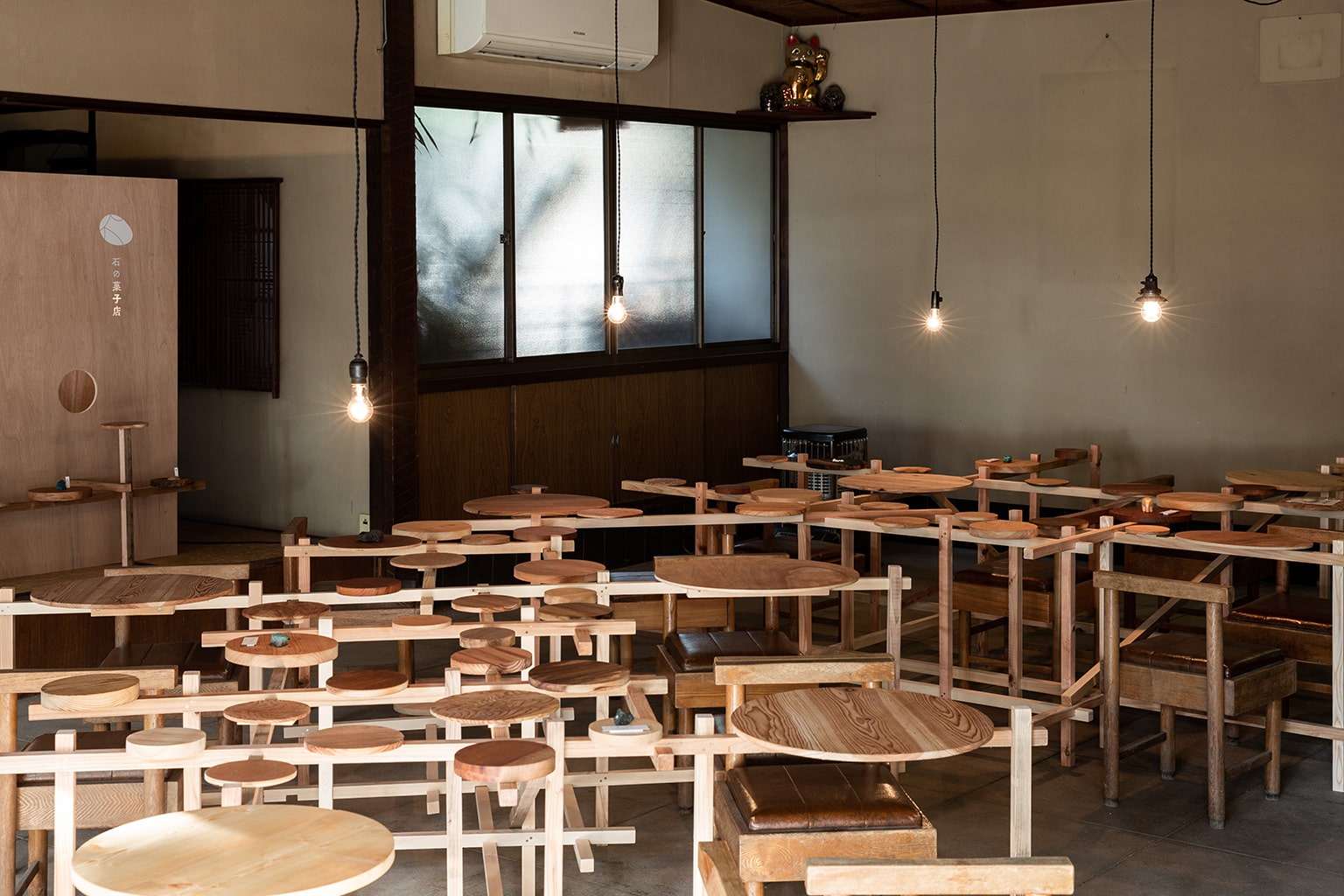
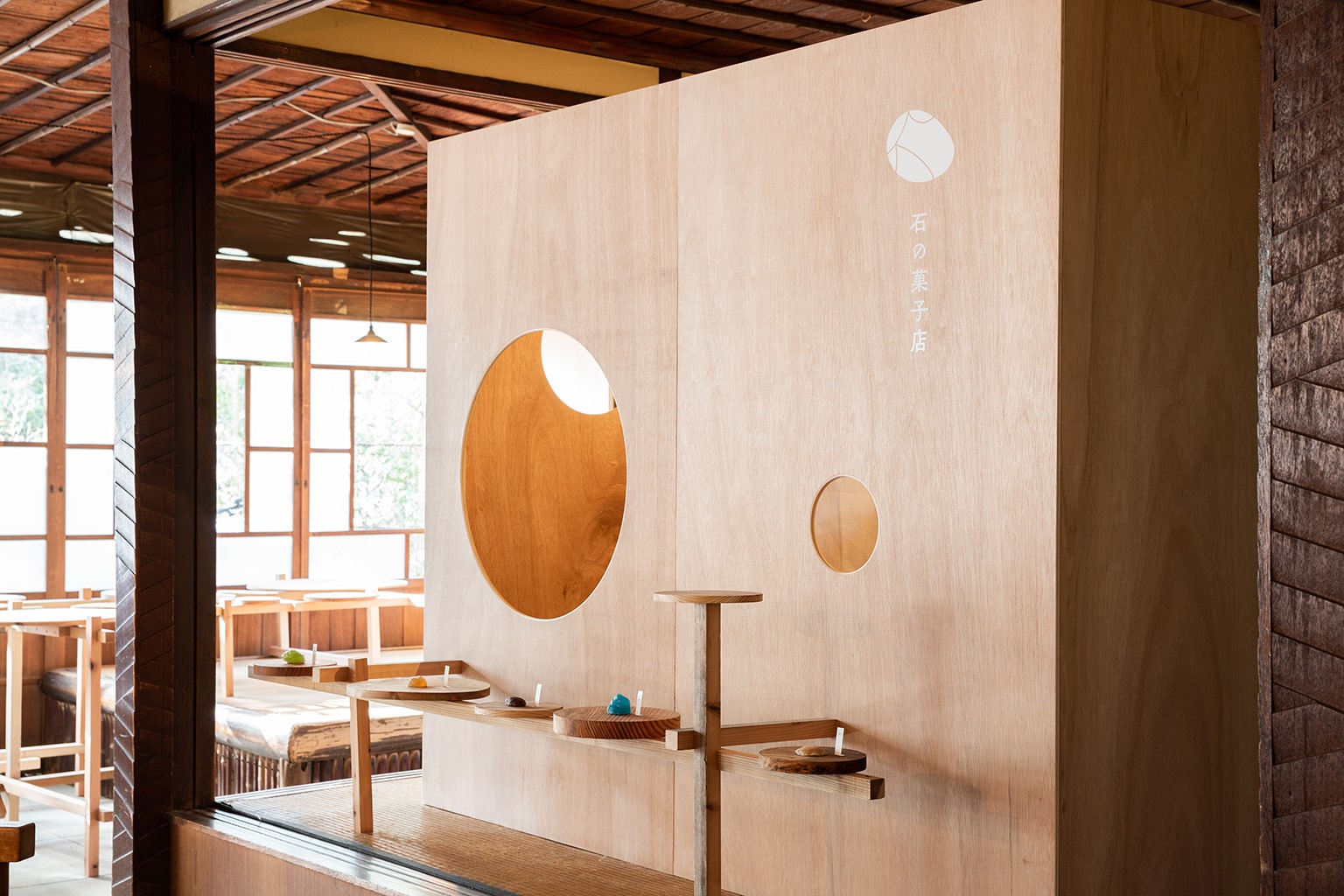
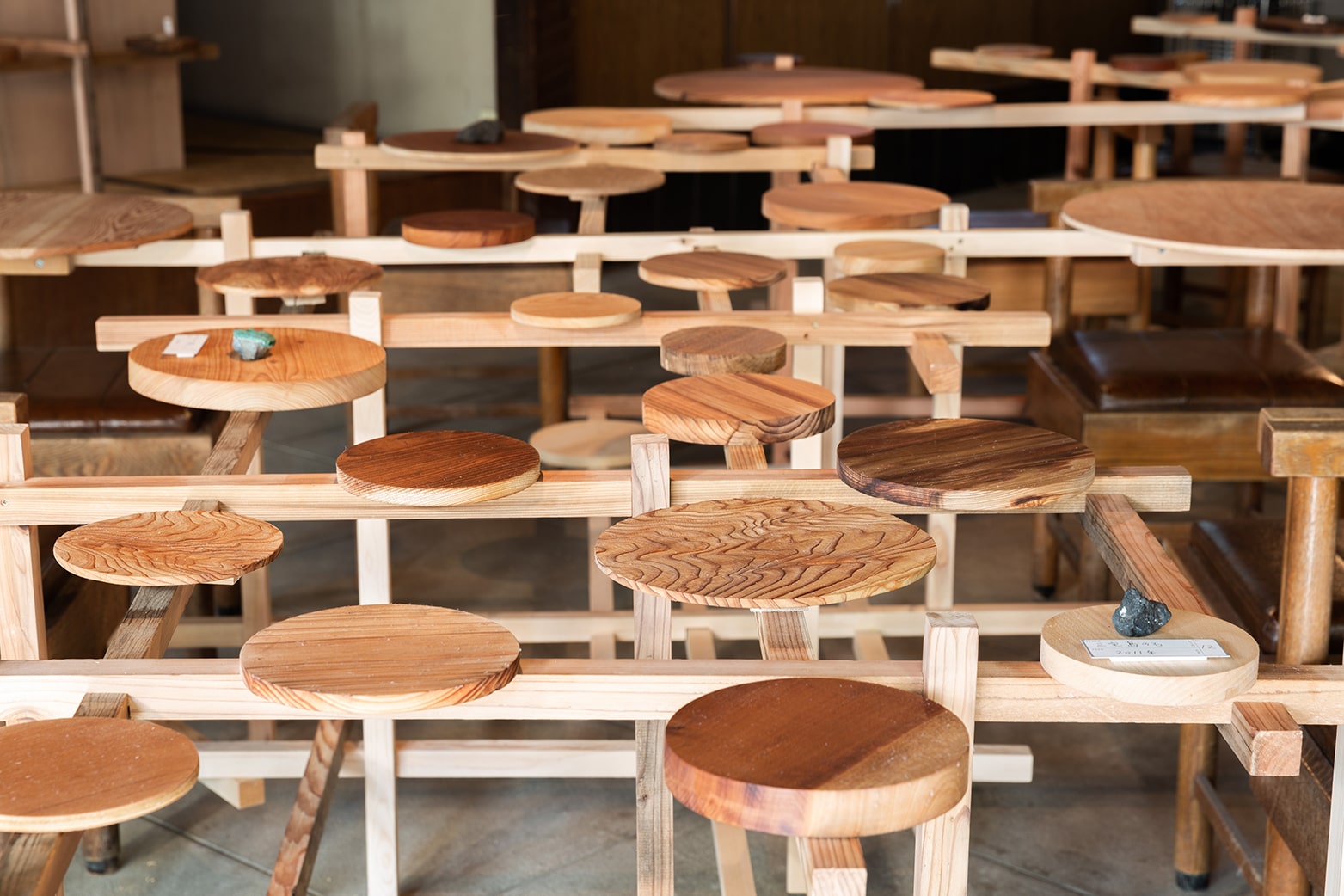
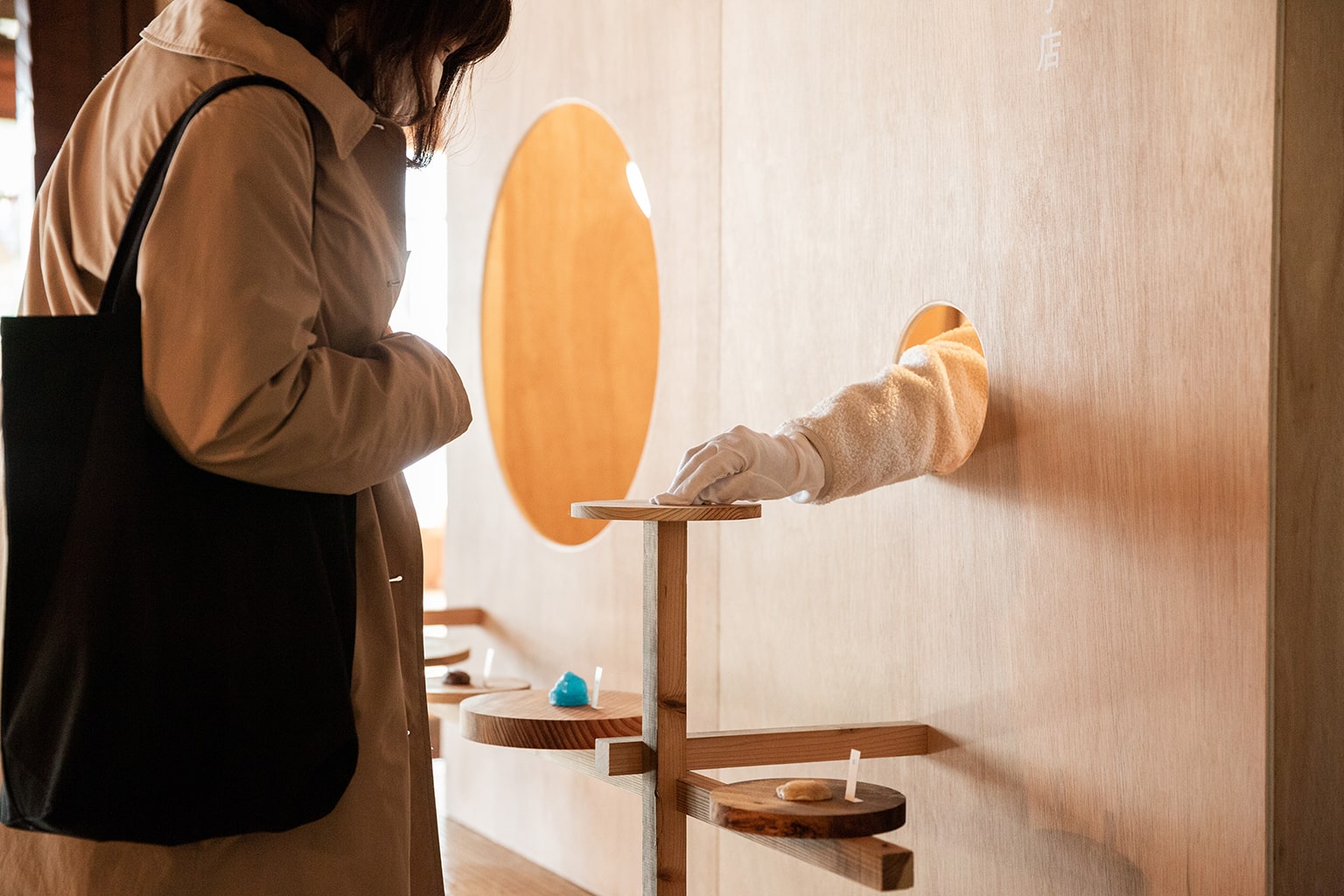
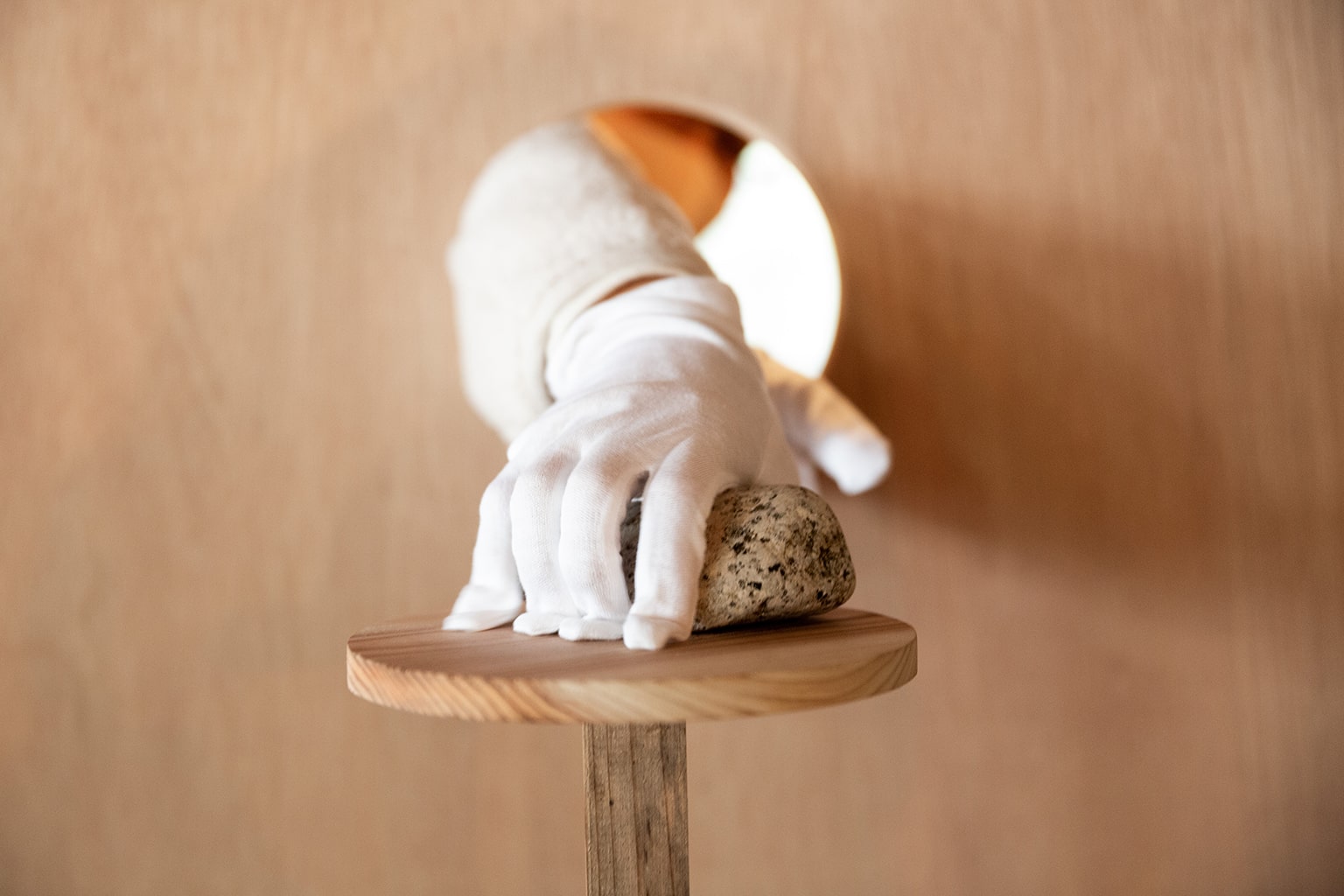
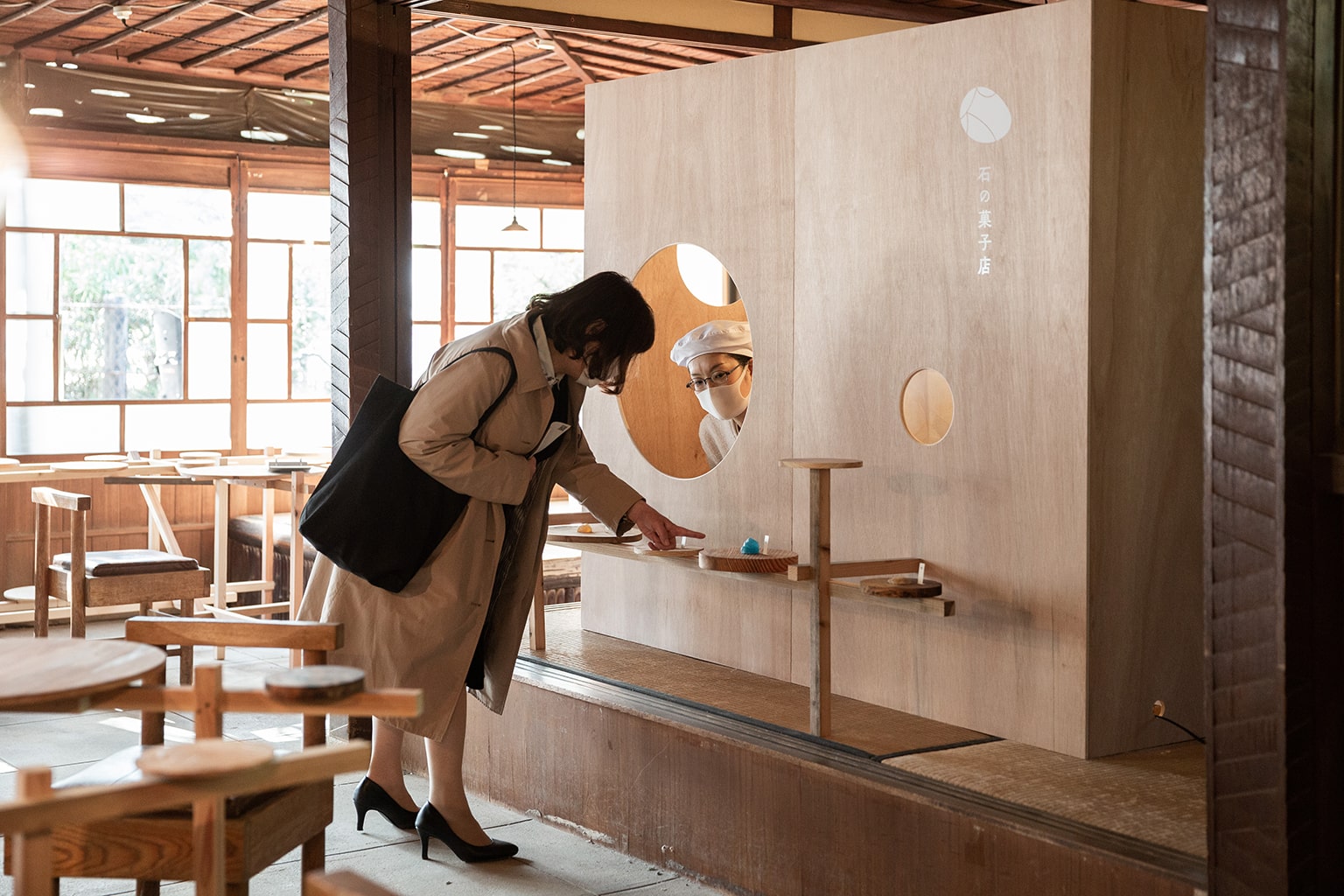
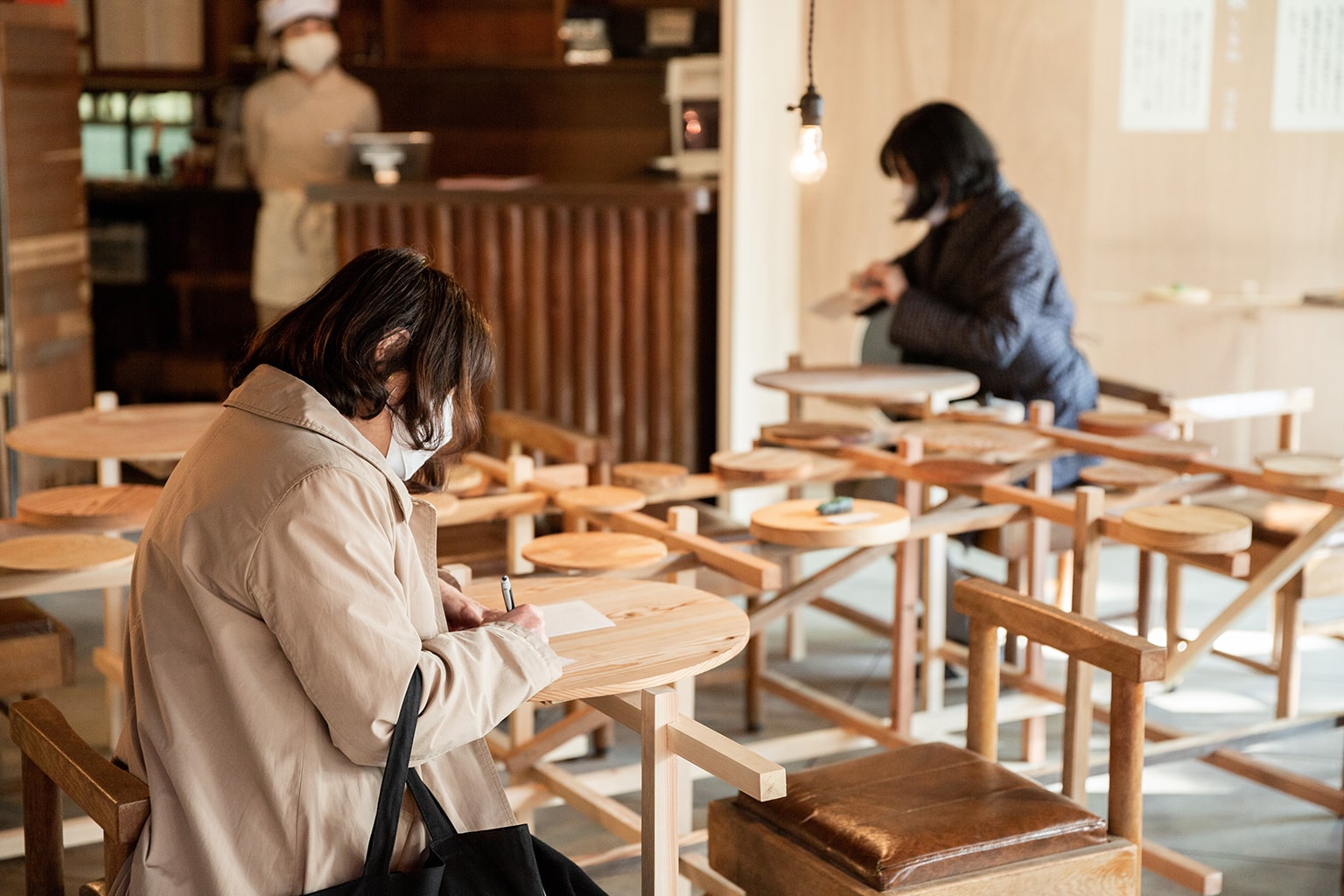
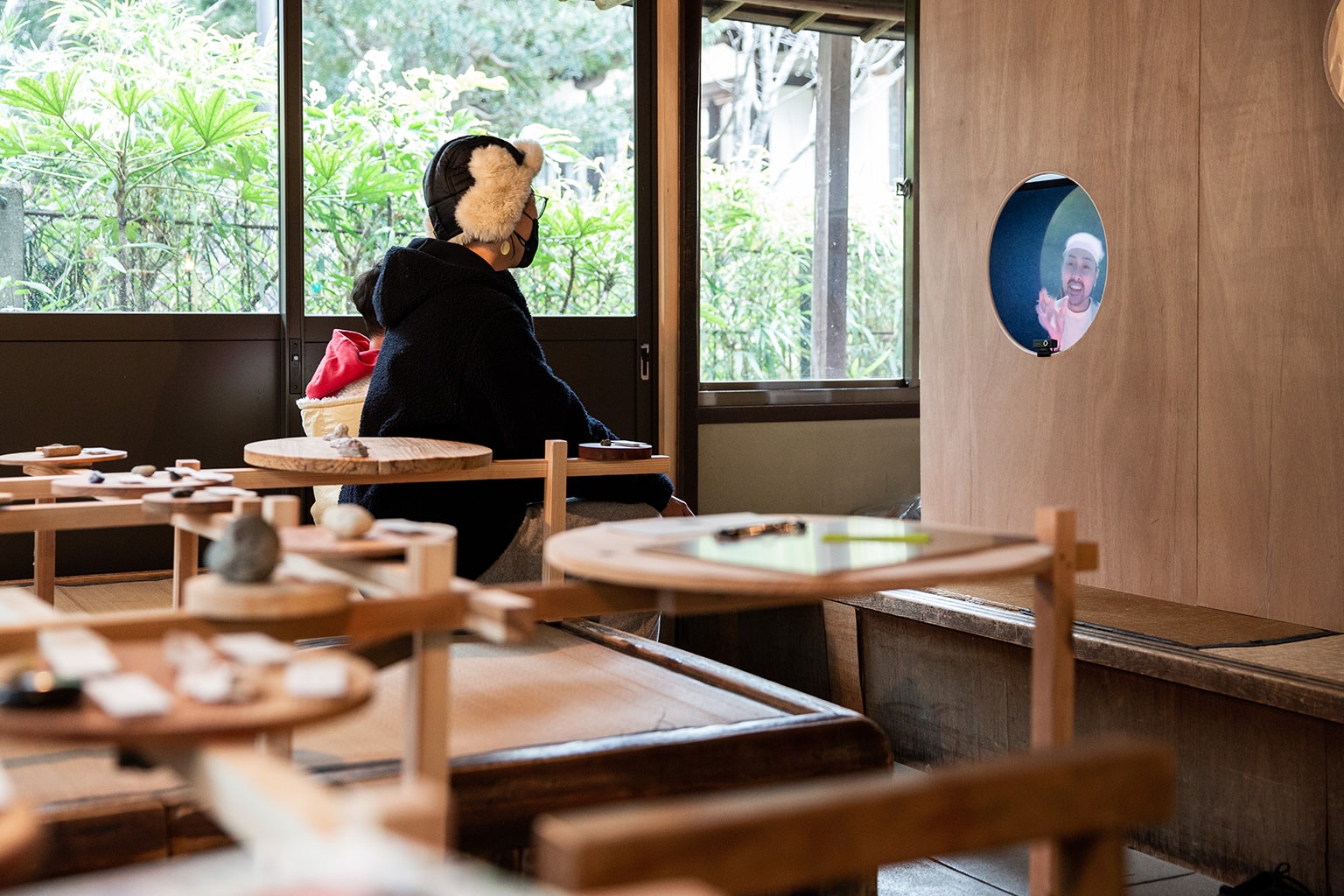
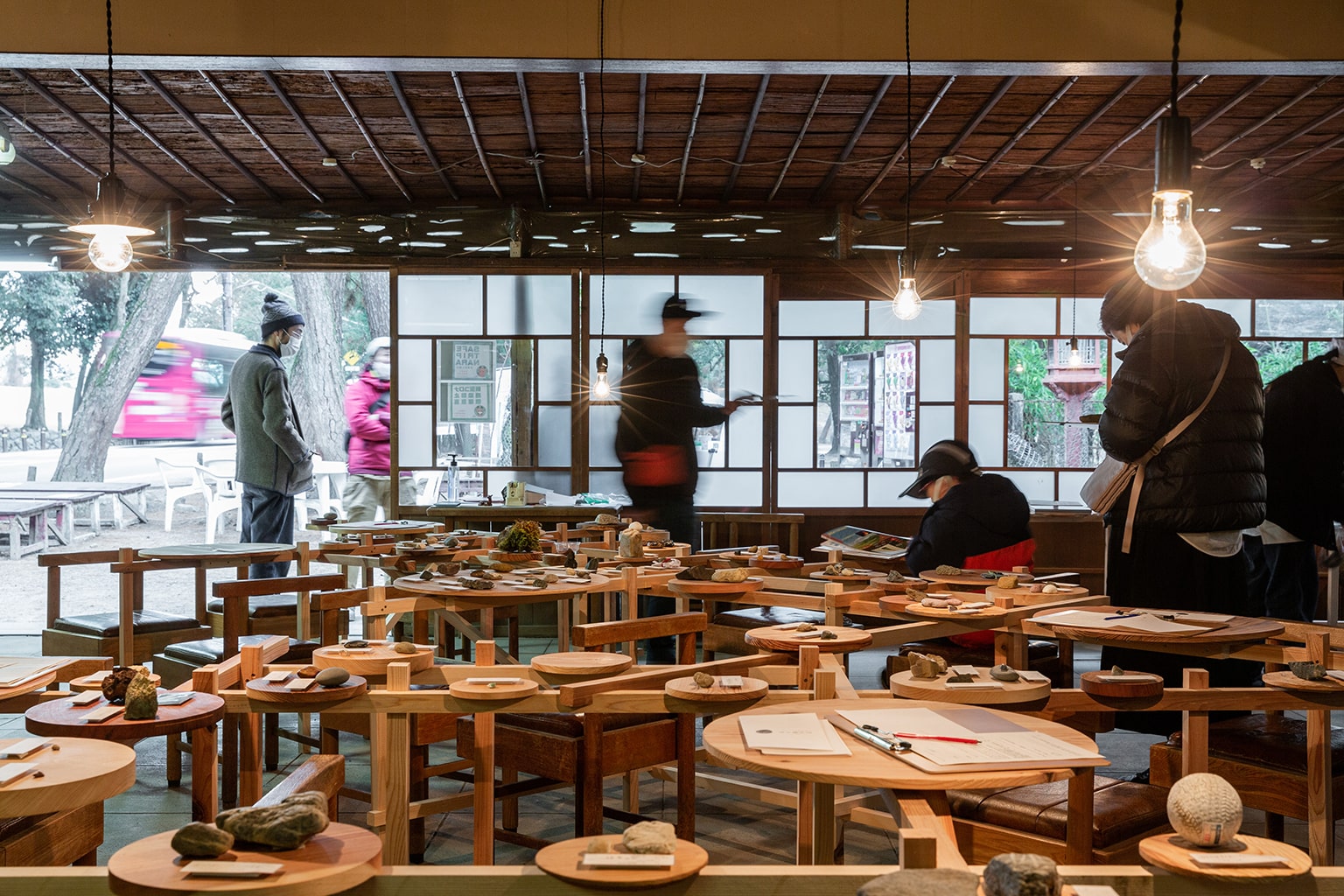
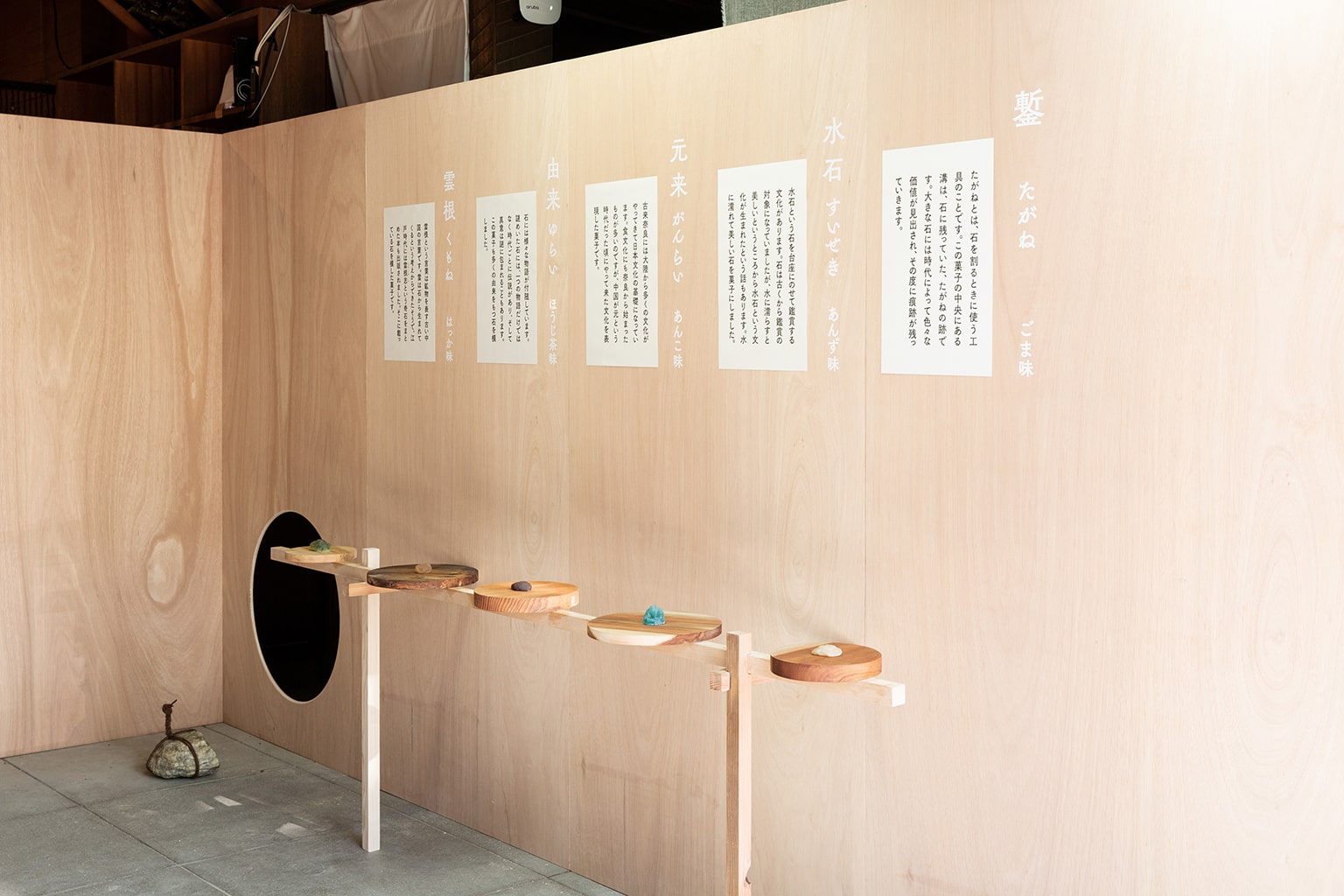
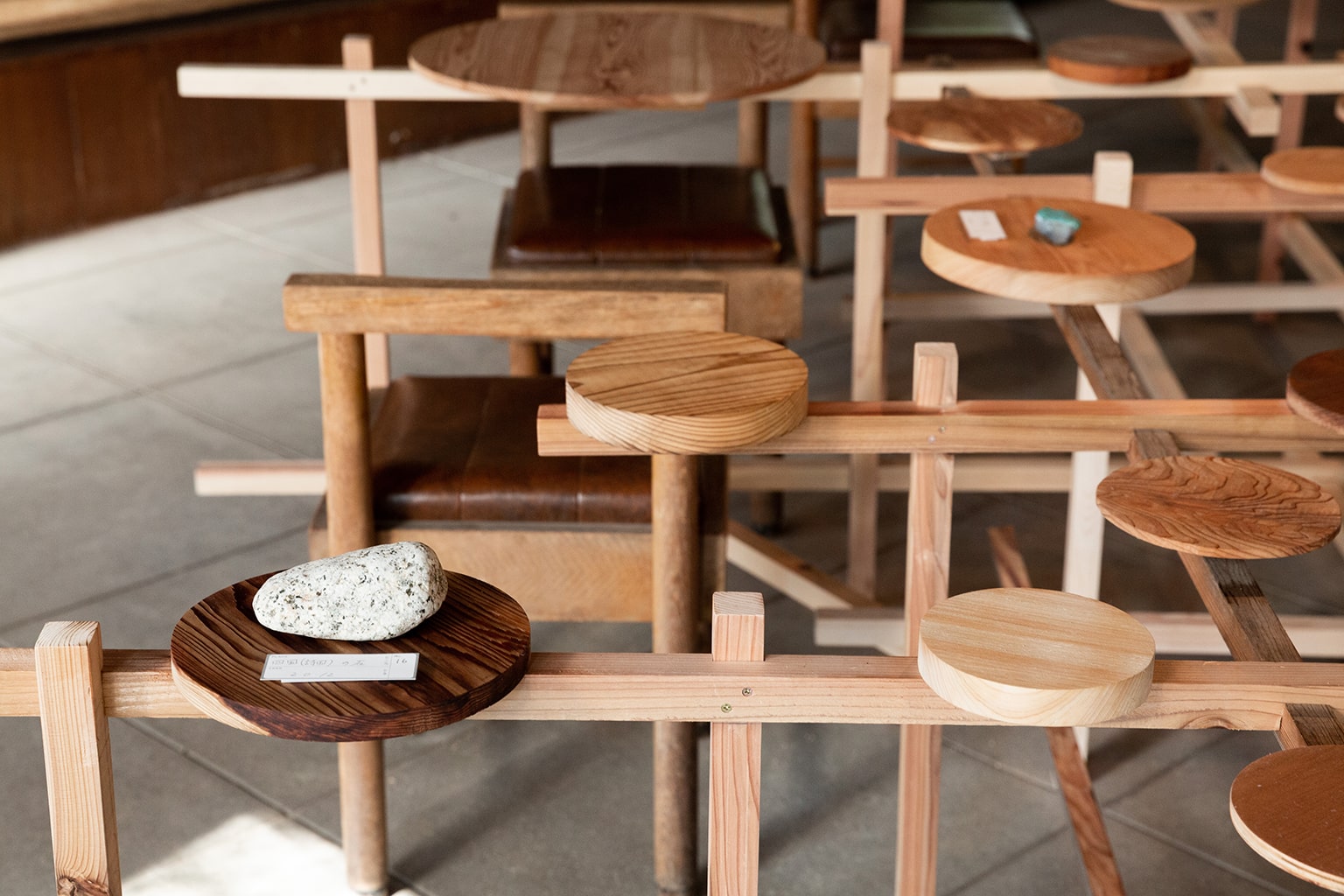
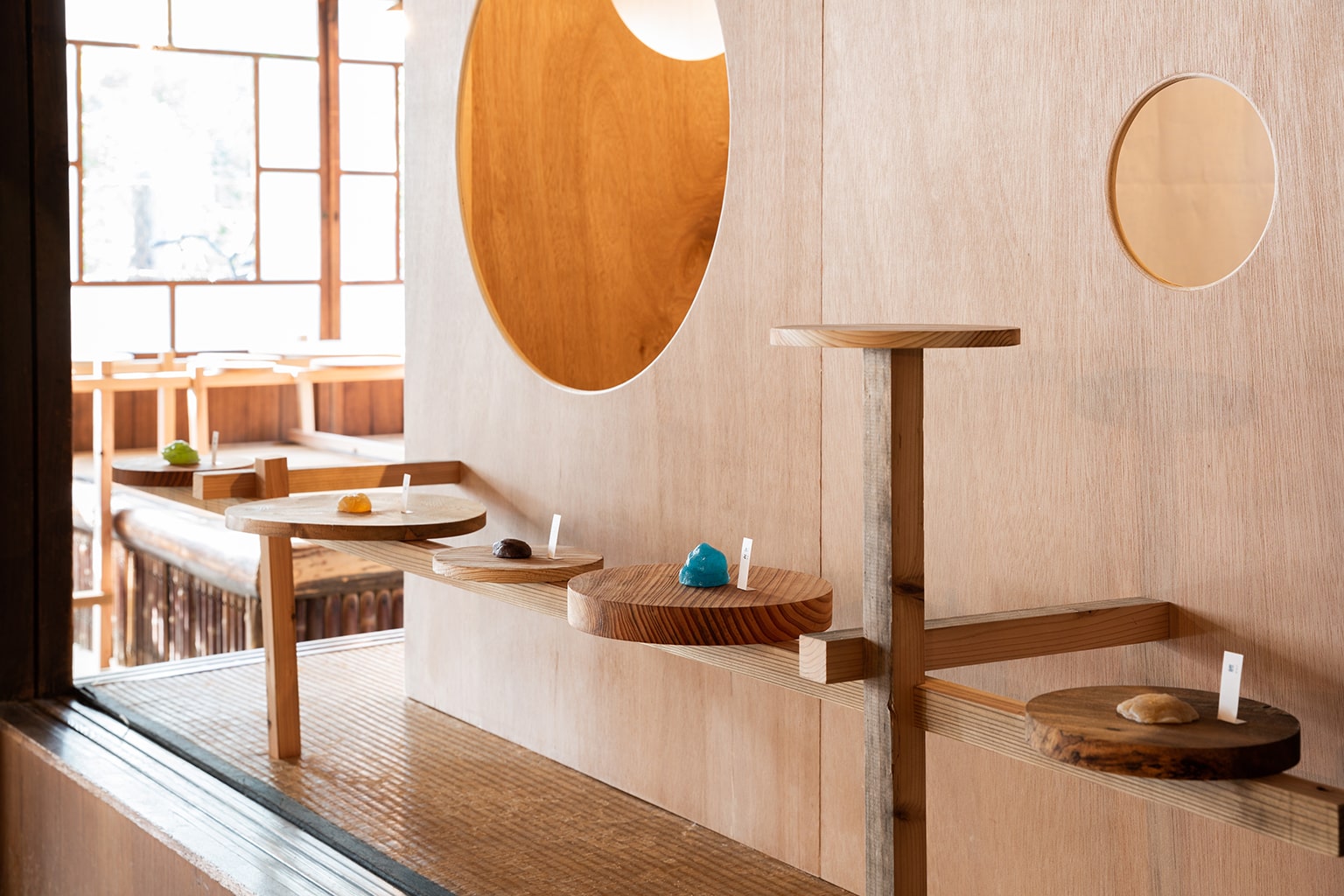
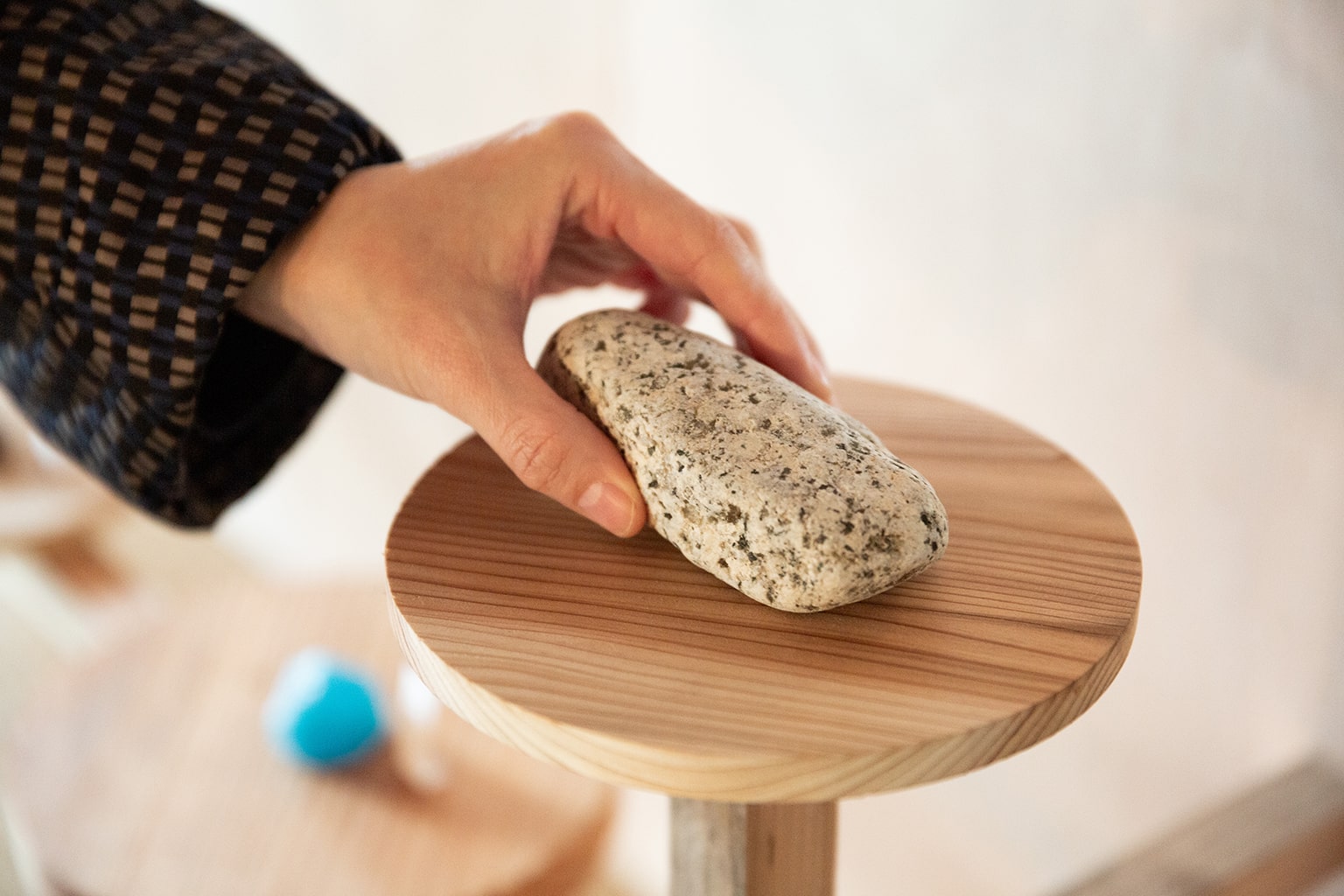
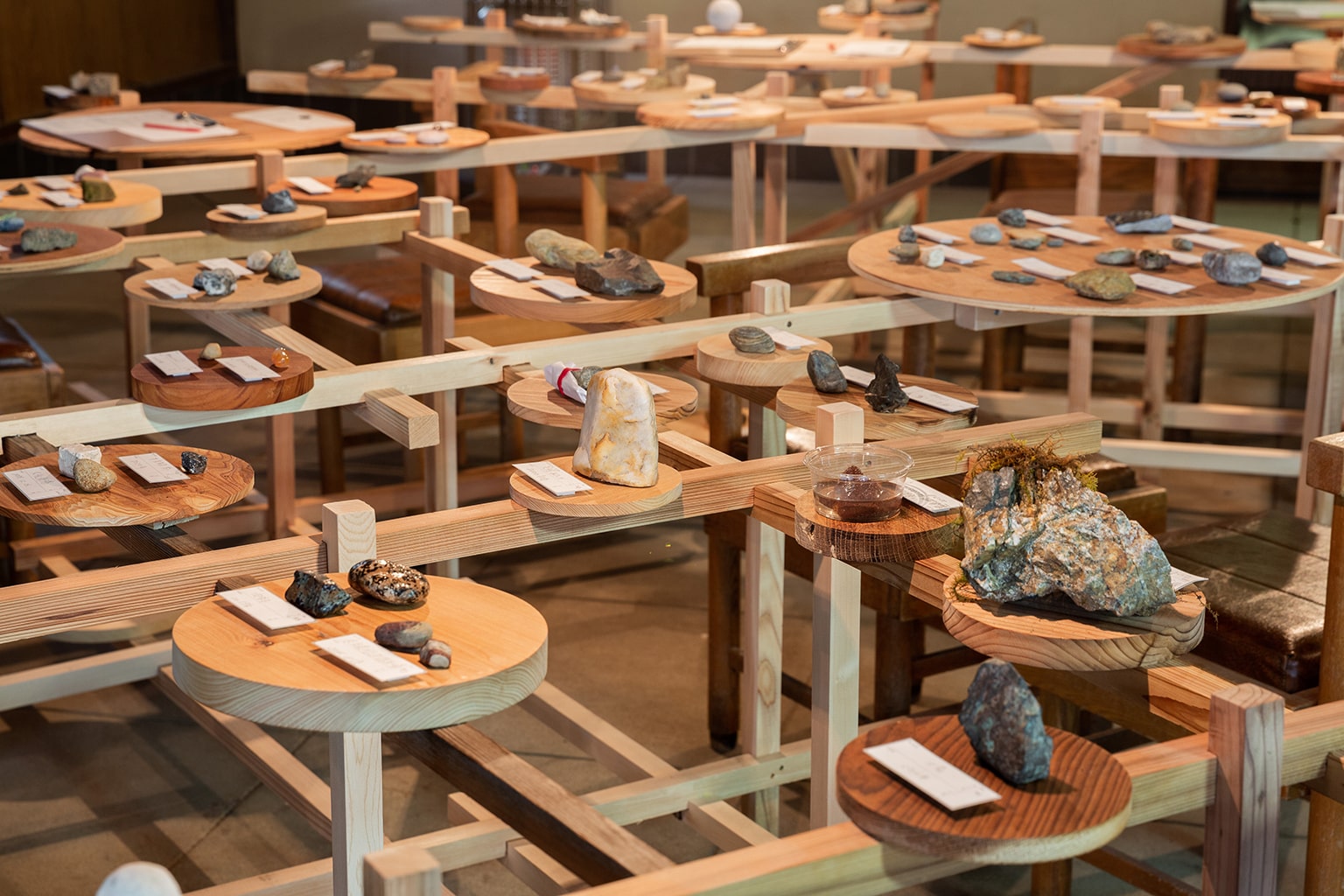
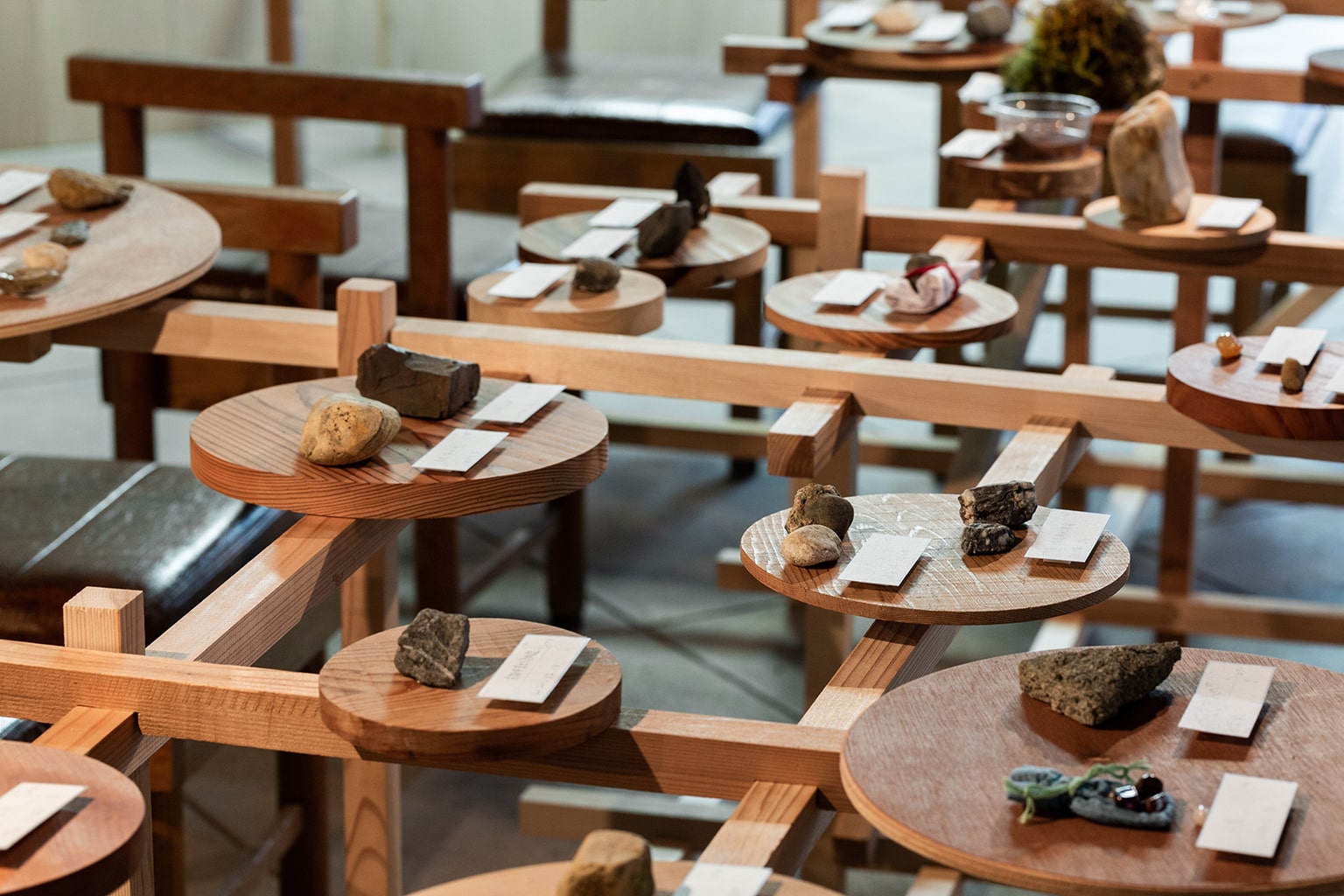
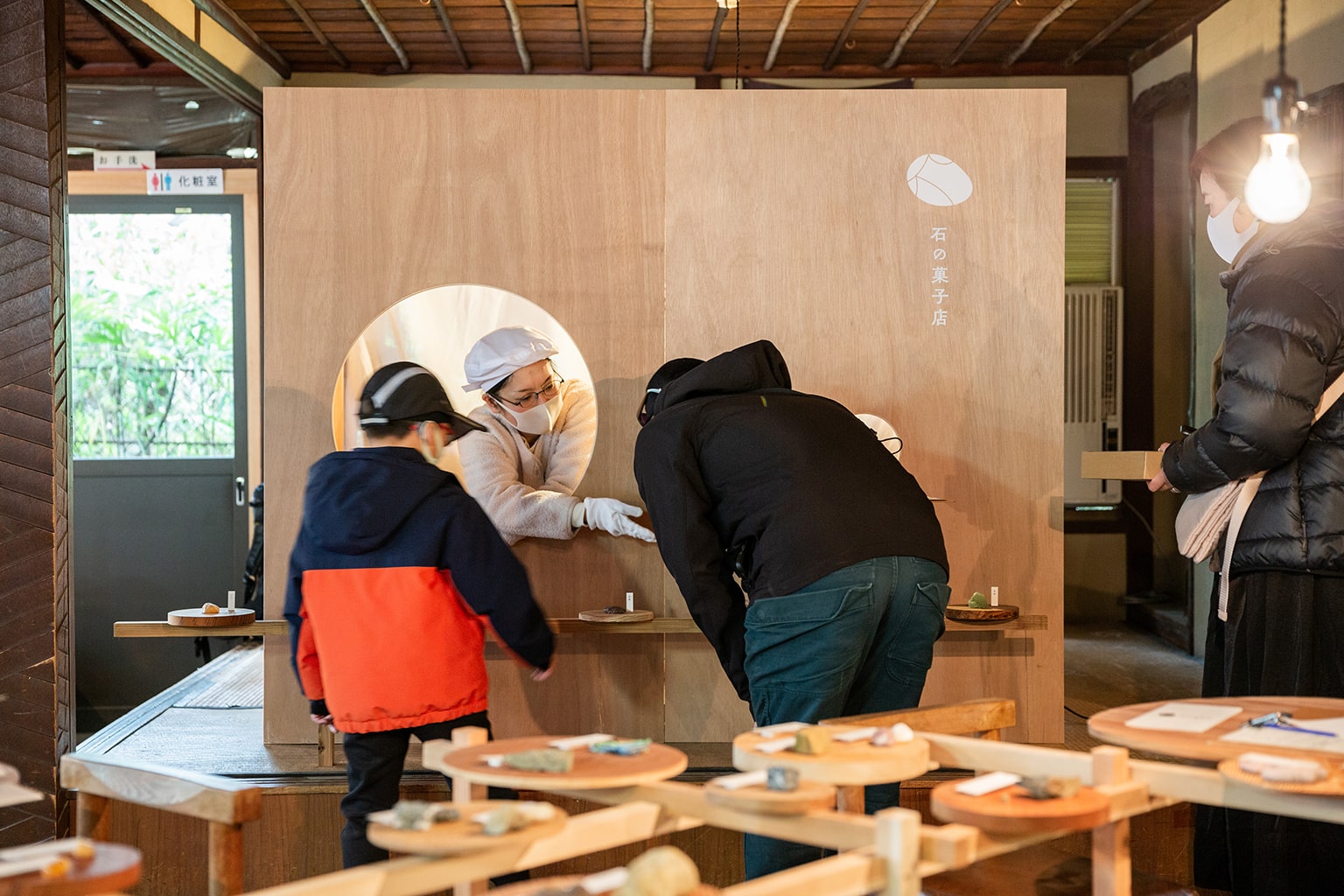
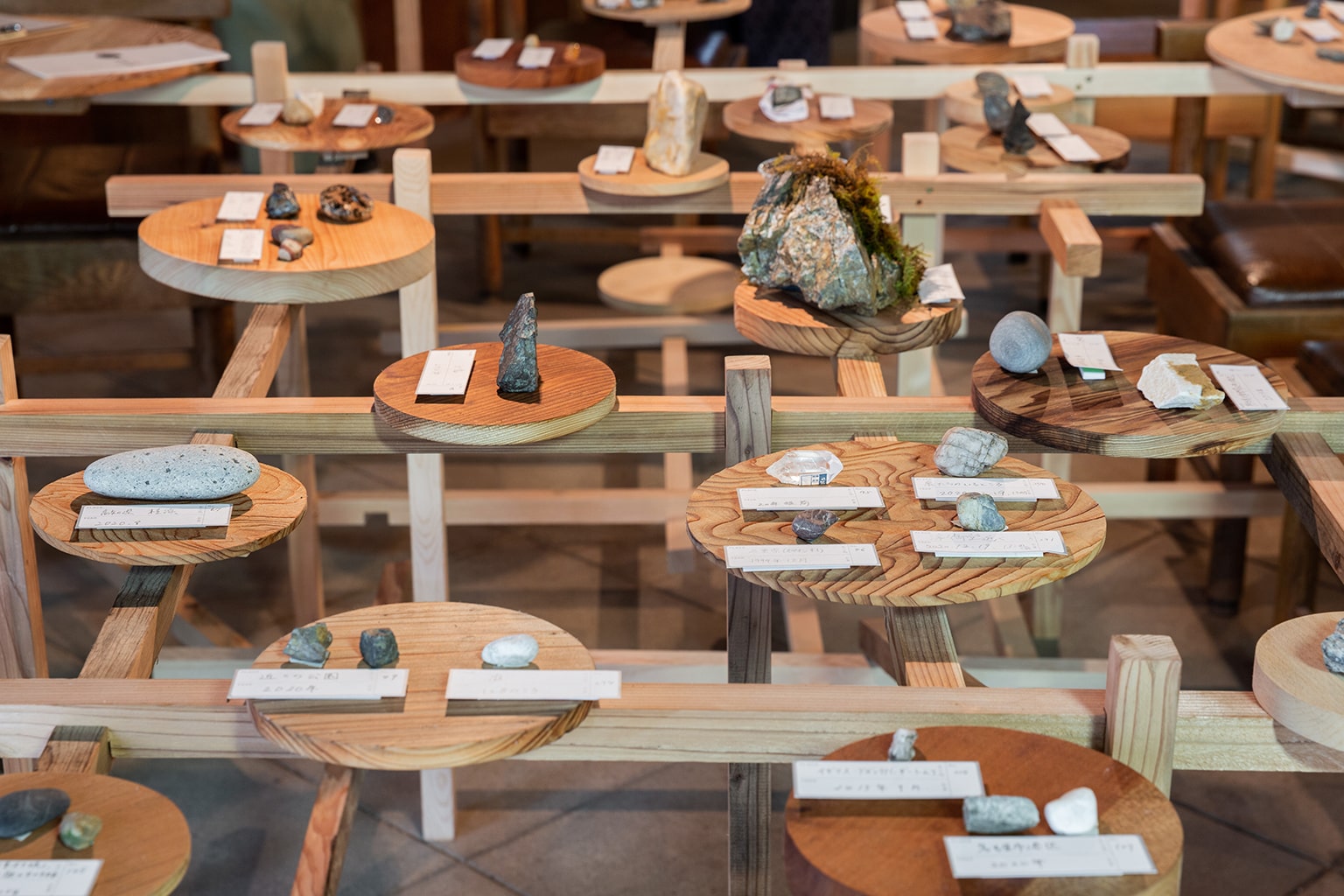
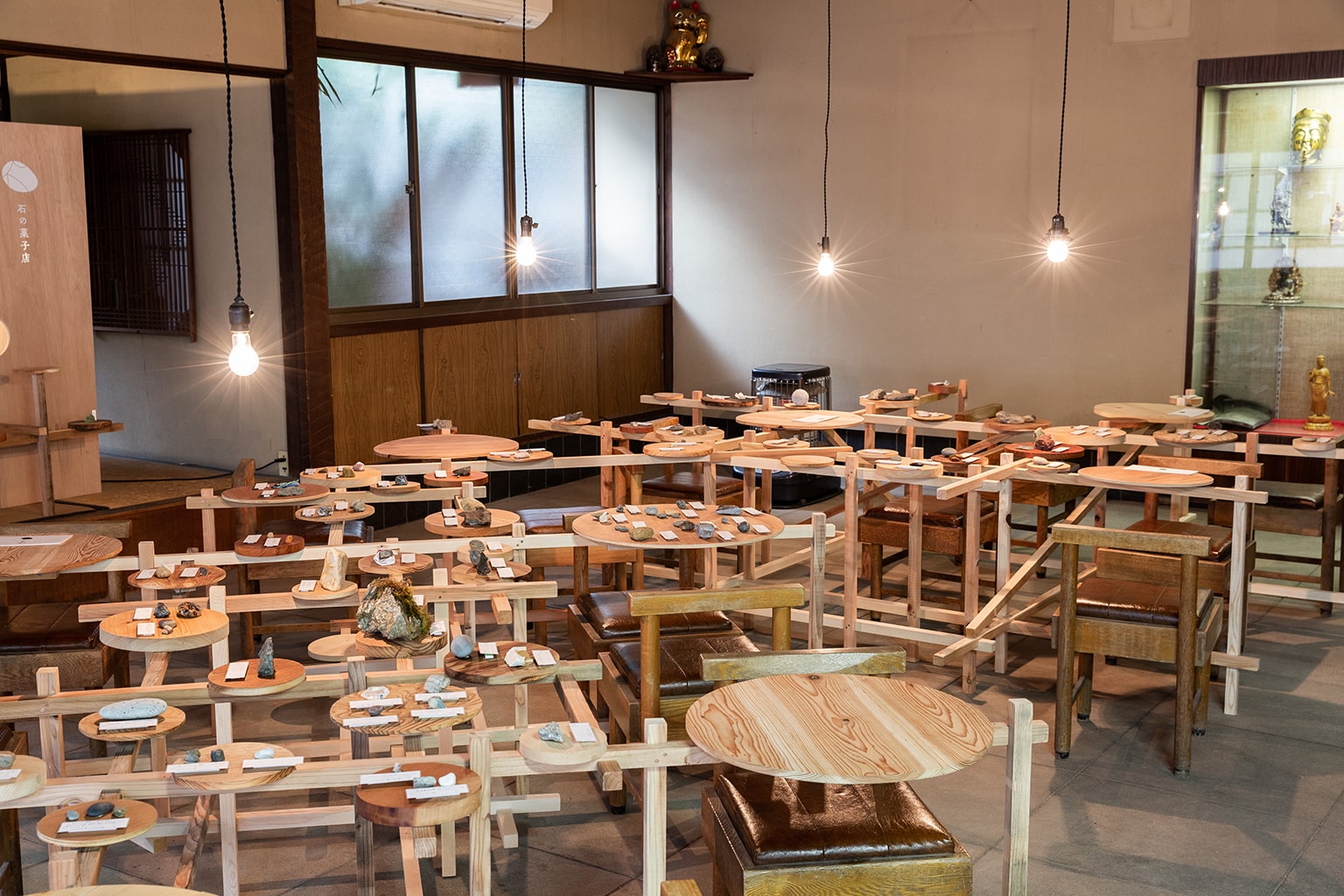
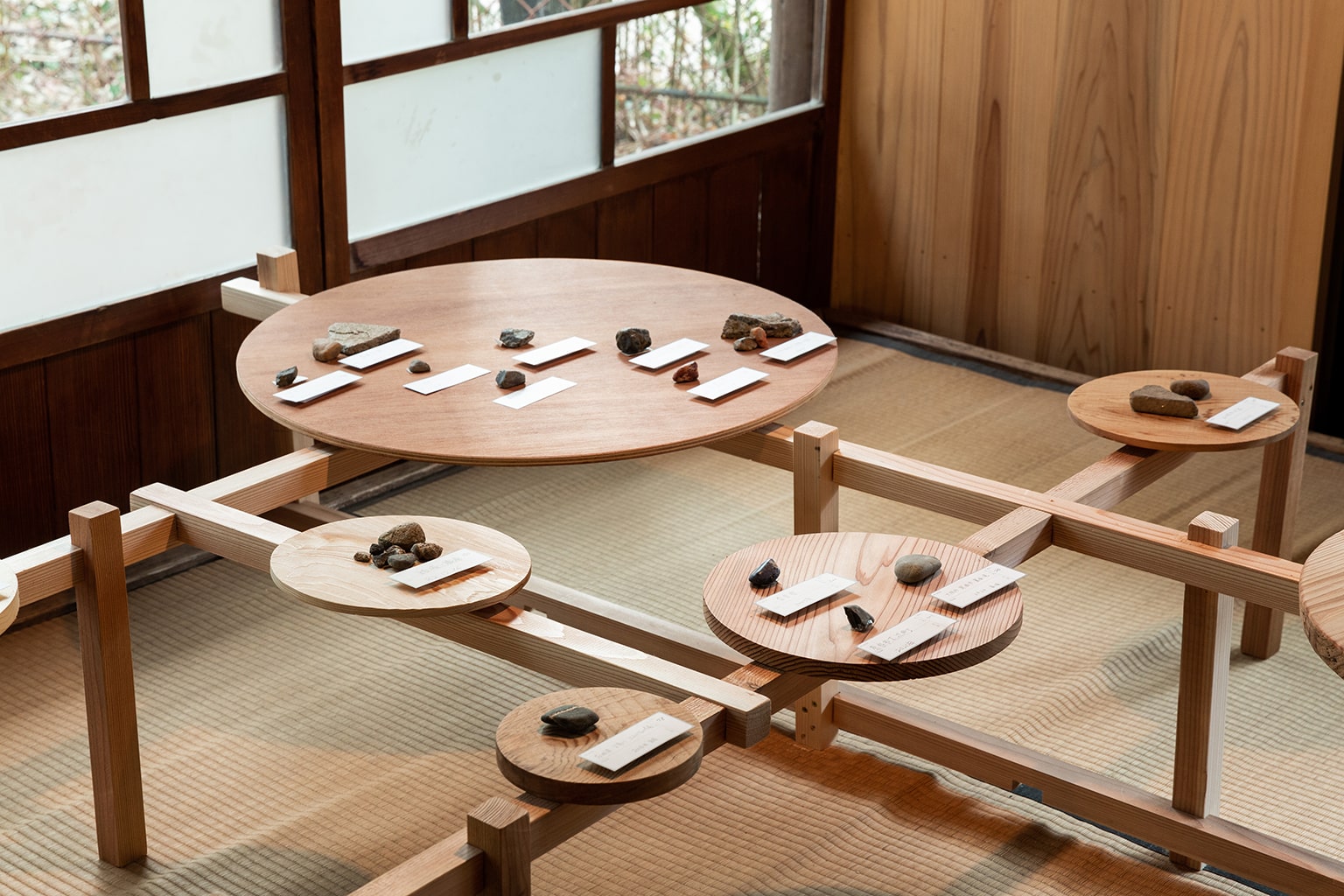
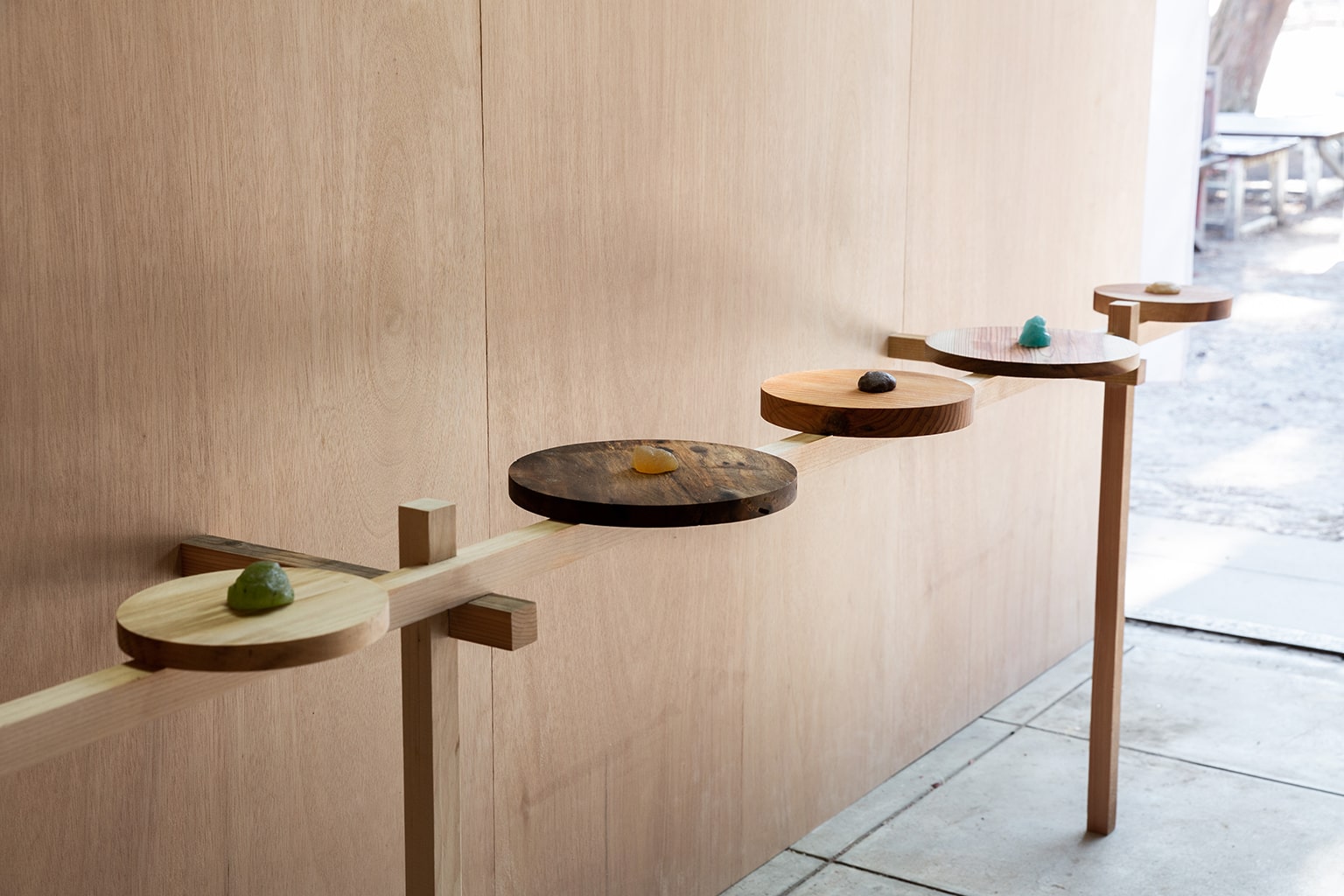
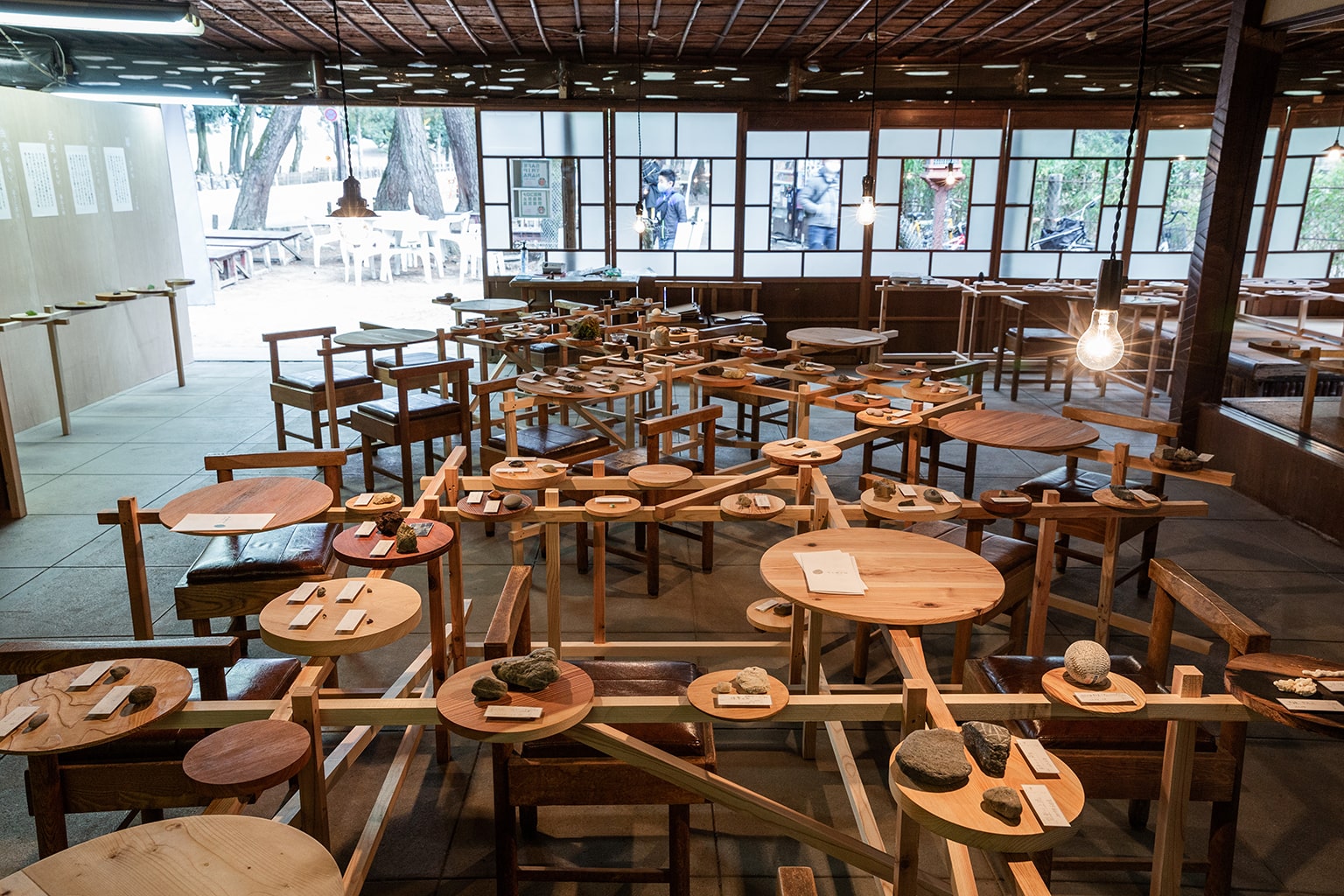
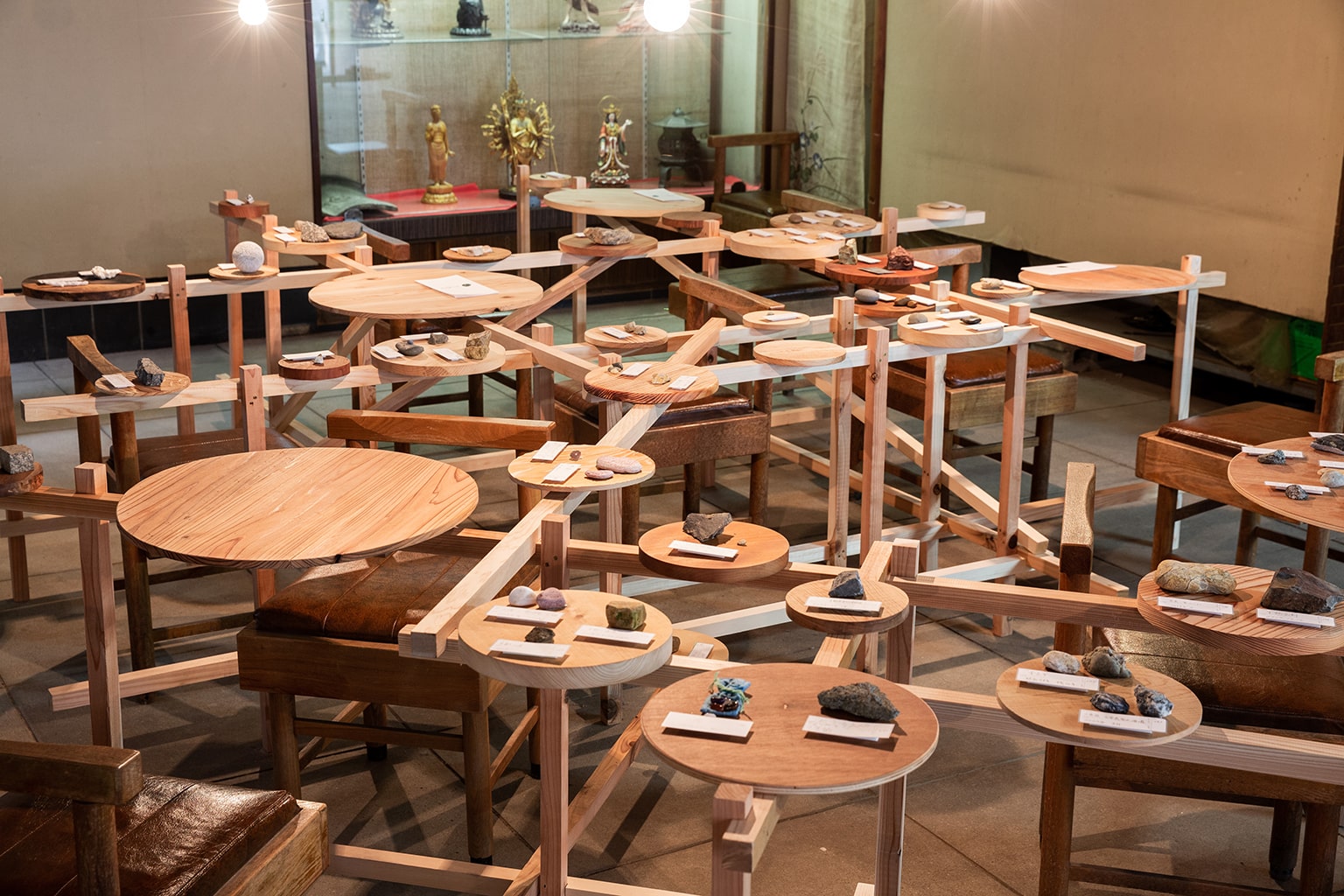
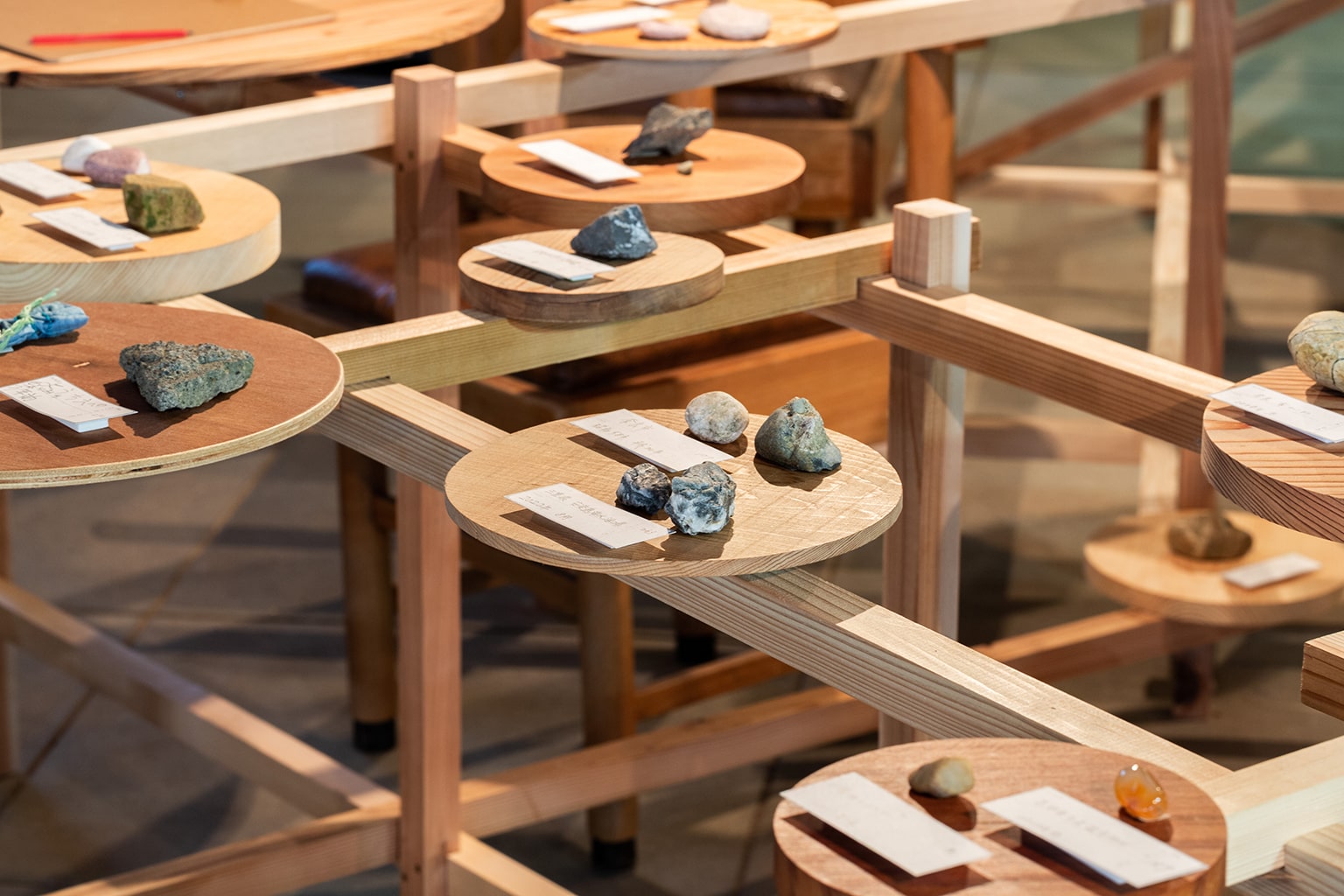
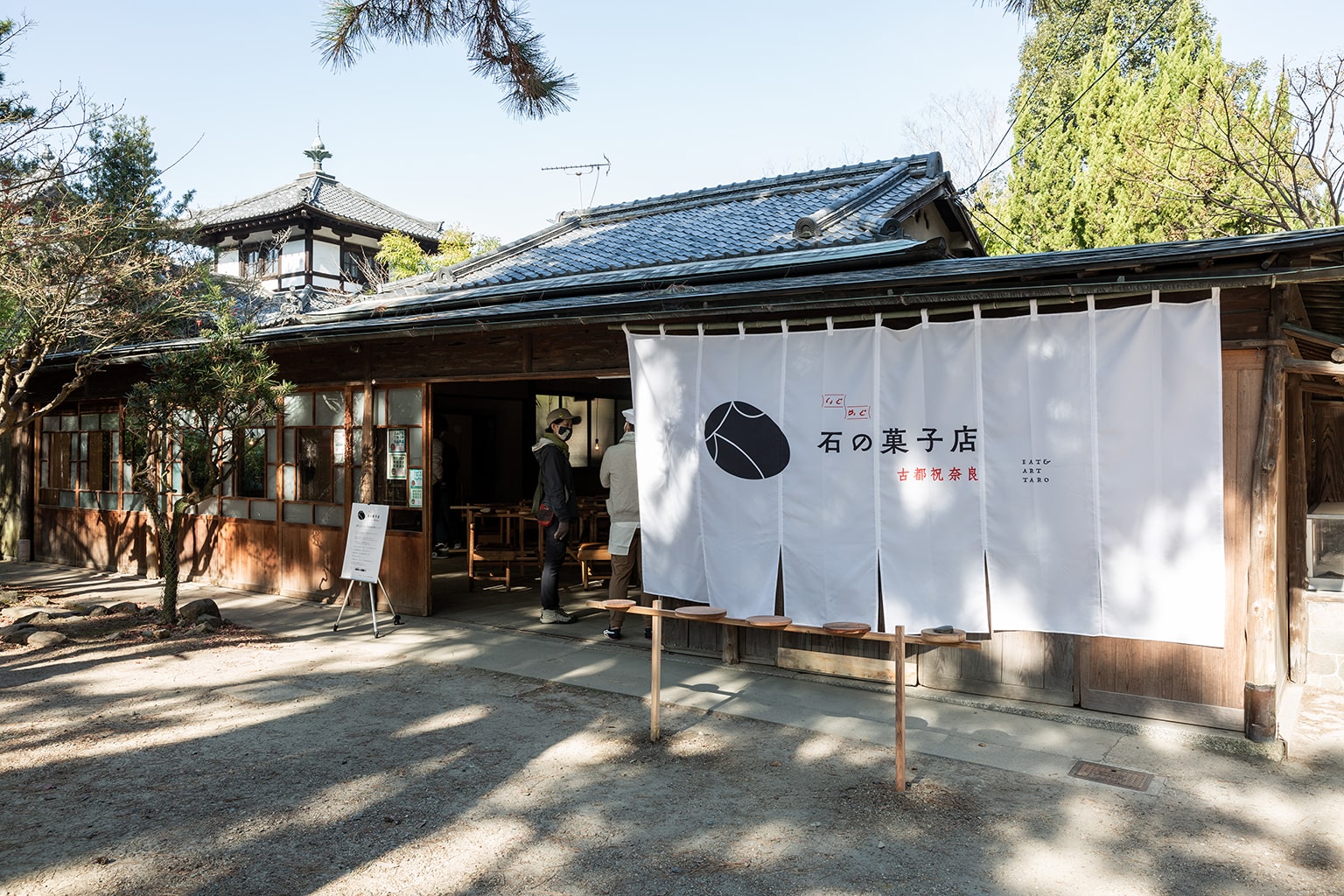
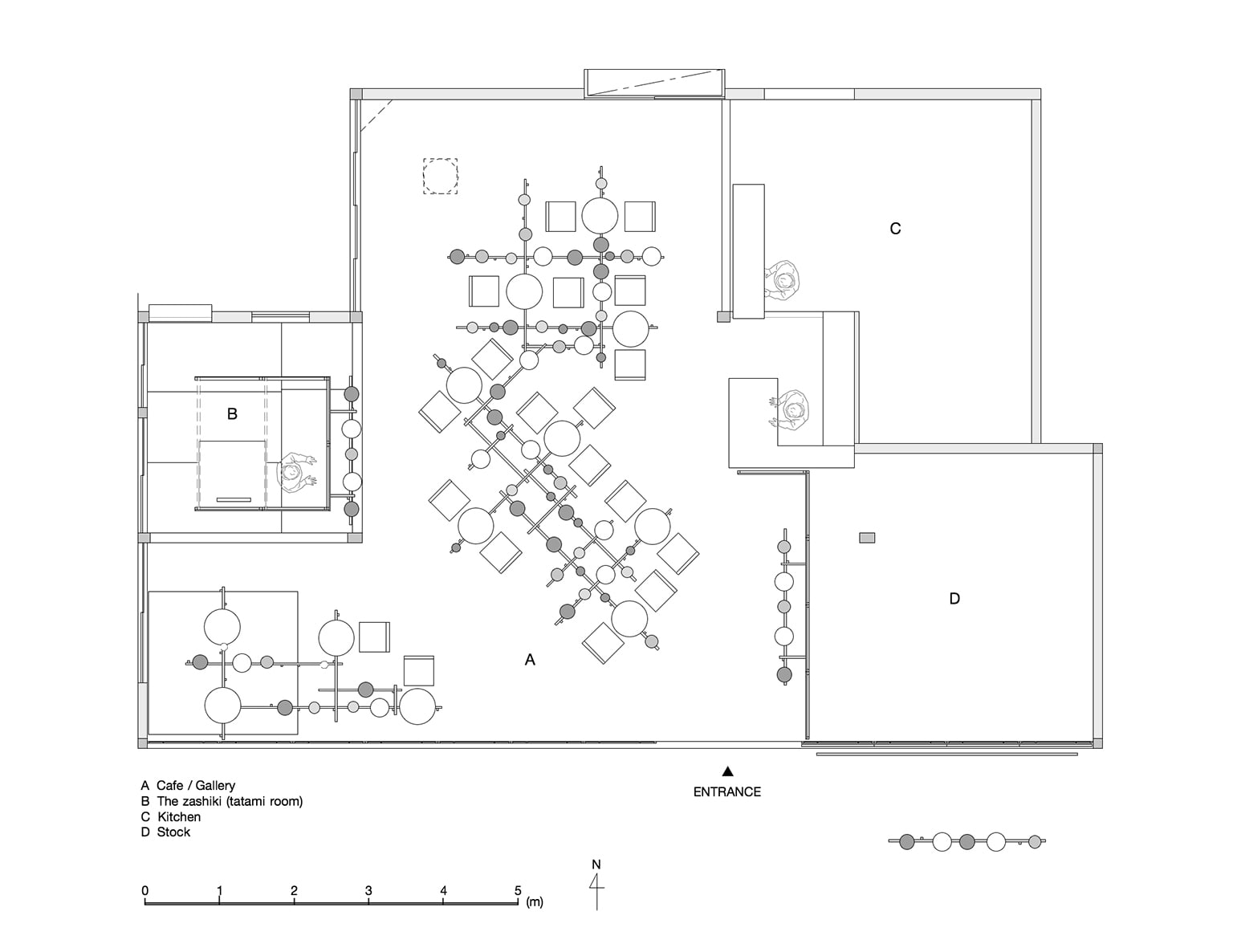
The Stone Confectionery Shop is an art project in Nara, Japan, by EAT&ART TARO, a contemporary artist who creates artwork with the theme of food and the director Yoshinari Nishio.
Nara was the capital city of Japan 1,300 years ago. The foundation stones of temples and kamiishi (holy stones where gods are believed to reside) of shrines from that time still remain today. Inspired by these stones, the shop sells gem-like sweets, which we cannot buy with money. We need to bring stones filled with memories and exchange them with the sweets.
EAT&ART TARO thinks, “To understand Nara is to trace back the memories of stones. The memories of the stones are literally the migration of the stones. The stones that came from somewhere in the distant past are histories, memories, and values that you can find in Nara.”
With his passion in mind, Yagyug Douguten converted chaya (teahouse) situated on the historical approach to Kasugataisha Shrine to the Stone Confectionery Shop. It was a shop design and art installation for just ten days.
Inside the shop, there lined up 88 wooden disks. They are supported by a kumiki (traditional joinery) framework, occupying most of the chaya space. Each wooden disk is a plate for exhibiting stones that customers brought to the shop, and when they sit on the chairs in between, it can also be used as a table where they can “eat the stone-like sweets while being surrounded by real stones.”
The zashiki (tatami room) is where customers can exchange stones they brought for the sweets imitating stones through the holes of different sizes. TARO is behind one of these holes to exchange the stories of the stones with them.
The wooden disks are cut out from local wood waste and reused wood of numerous tree types and colors. We want customers to serve their stones on their favorite wood and cherish them. They can also appreciate various stones that are brought with memories, take pictures while eating stones, and give a little chuckle with a customer sitting at the next table. We want them to start conversations through the stones.
We aim to have customers “eventually see the wooden disks as dessert plates and stones as sweets.” “To see stones as sweets” is a metaphor for TARO’s idea of tracing back the memories of stones to encounter Nara’s histories and values, and it is also a connotation of hope that a seemingly ordinary object might conceal charms inside.
『石の菓子店』は食をテーマに現代美術を作り続けるEAT&ART TAROとディレクター西尾美也による日本の奈良でのアートプロジェクトです。
1300年前、奈良は日本の都でした。当時の寺院の礎石や神社の神石(神が宿る石)などは今も残ります。この店にはそれらの石を模した宝石のような菓子が並びます。その菓子はお金では買えません。人々は思い入れのある石を持参すると菓子と交換できるのです。
「奈良を紐解くとは石の記憶をたどること。石の記憶とは、石の移動である。はるか昔、どこかから移動させられて今も残る石は、奈良から感じ取ることができる歴史、記憶、価値である」とEAT&ART TAROは考えます。
その思いを元に、やぐゆぐ道具店が歴史ある春日大社参道の茶屋を『石の菓子店』に変えました。10日間だけの店舗デザインでありインスタレーションです。
店内には木の円盤が88枚並びます。それらは組木のフレームに支えられており、茶屋の大部分を占めます。木の円盤はお客様が持参した石を展示する皿であり、合間の椅子で「石に囲まれ、石を模した菓子を食べる」ことのできるテーブルです。
座敷は石と菓子の交換所です。大小の丸穴を通じて持参した石と、石を模した菓子とを交換できます。丸穴のどこかにはTAROさんがいて、石についてのエピソード交換ができます。
木の円盤は地元の端材や古材を切り出したものです。よって樹種も色も様々です。好きな木に石を盛り、愛でてほしいと思います。思い出と共に運ばれてきたたくさんの石を鑑賞したり、石を食べる姿を写真に撮ったり、隣のテーブルのお客様とクスッと笑いあったり。石を介在して会話が生まれればと思います。
そうして「いつしか木の円盤は菓子皿に、石は菓子に見えてくる」ことがねらいです。「石が菓子に見えてくる」ことは、石の記憶を辿れば奈良の歴史や価値と出会えるというEAT&ART TAROの考えの比喩であり、一見何気なく見えるものに魅力が潜んでいるという希望の暗示でもあります。
Project / The Stone Confectionery Shop
Open / December 11th, 2020~December 20th, 2020
Floor space / 103.1 sqm
Location / Nara, Japan
Client / CHISOU
Interior design and Installation / Fumitaka Suzuki (Yagyug Douguten)
Artist / EAT&ART TARO
Programme director / Yoshinari Nishio
Production coordinator / Sakiko Nishio, Mayumi Yoshida, Rina Sakurai
Graphic design / Azusa Kawaji
Photo / Natsumi Kinugasa + Nara City Art Project Executive Committee